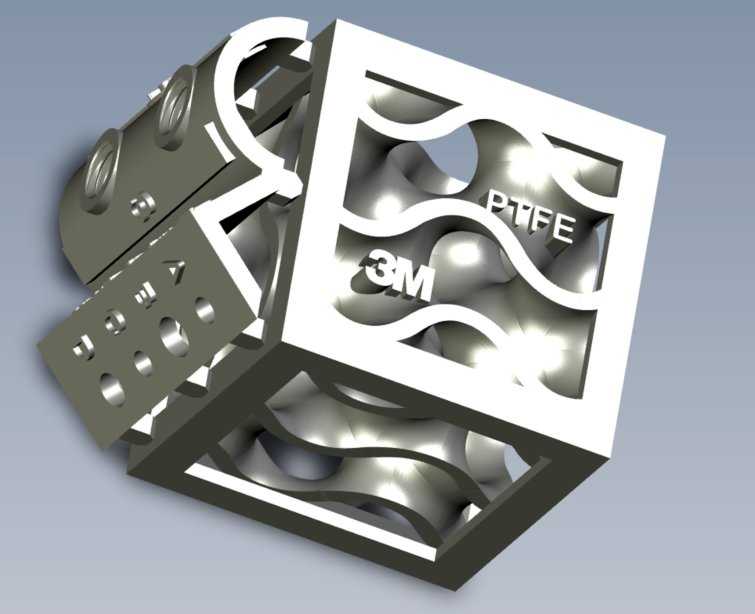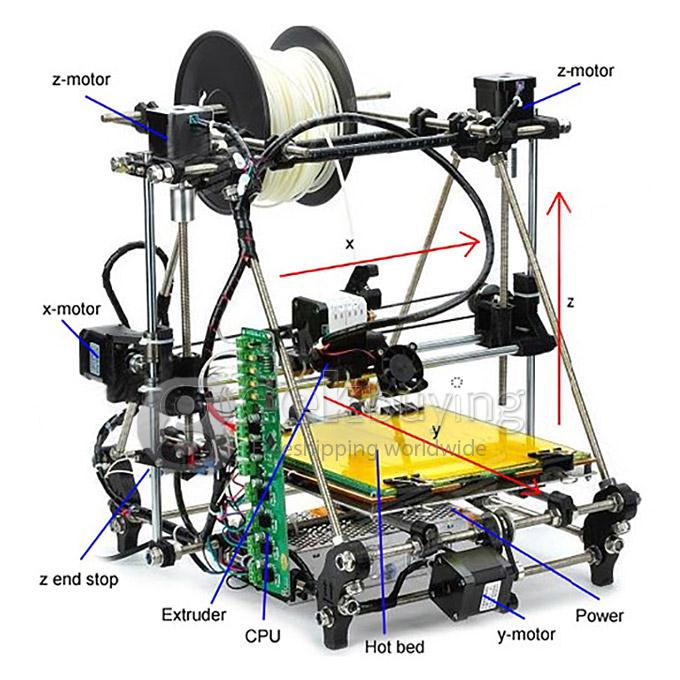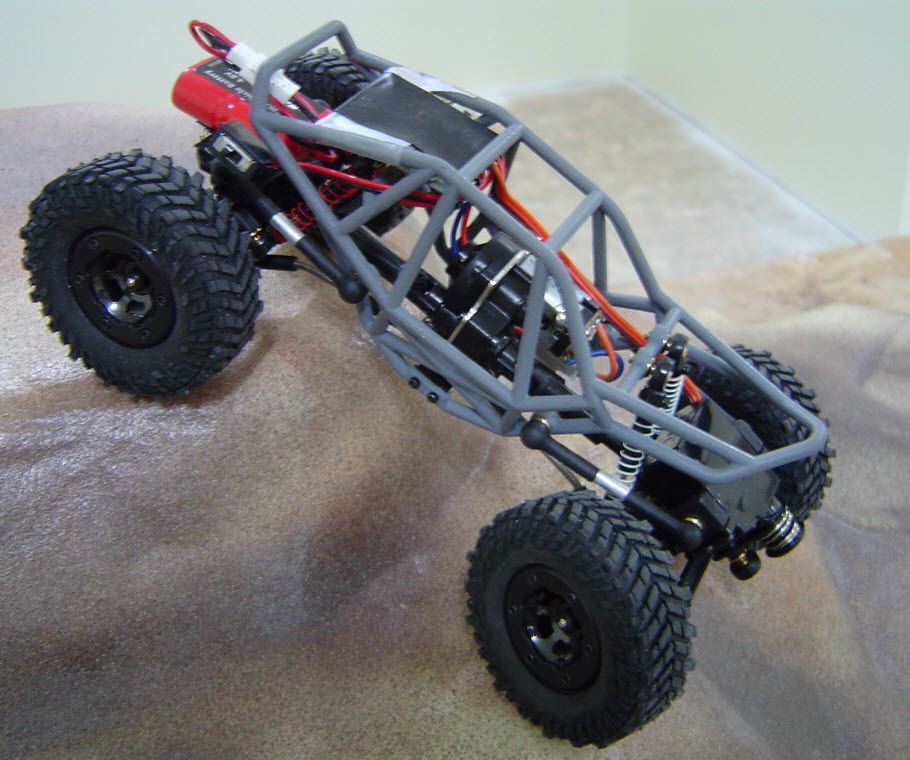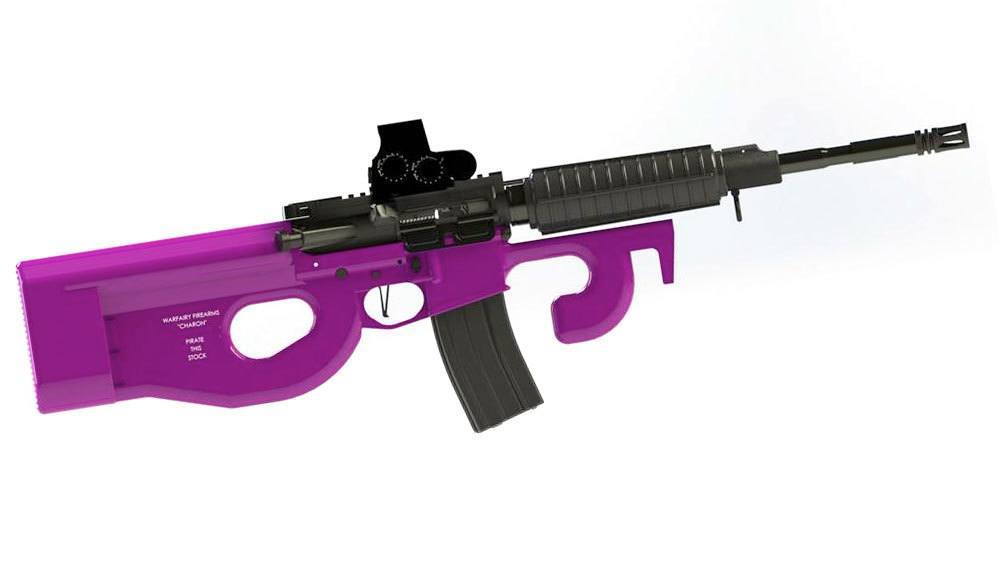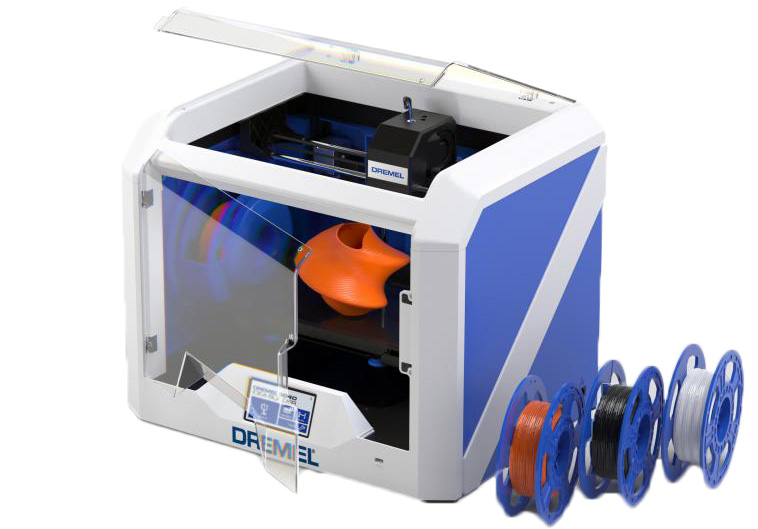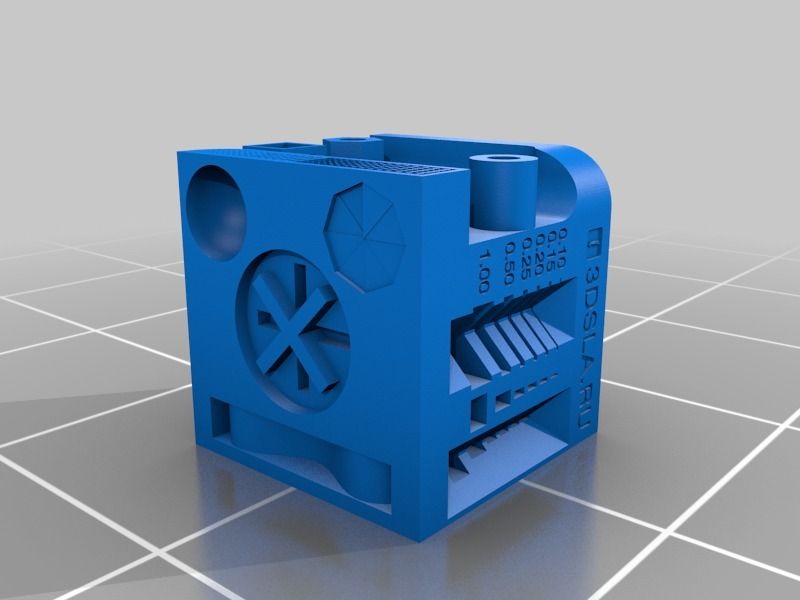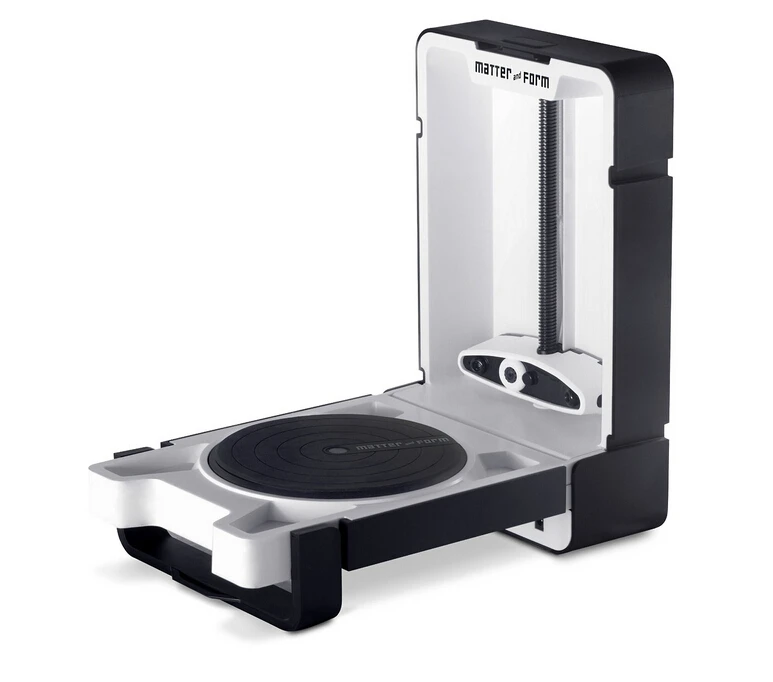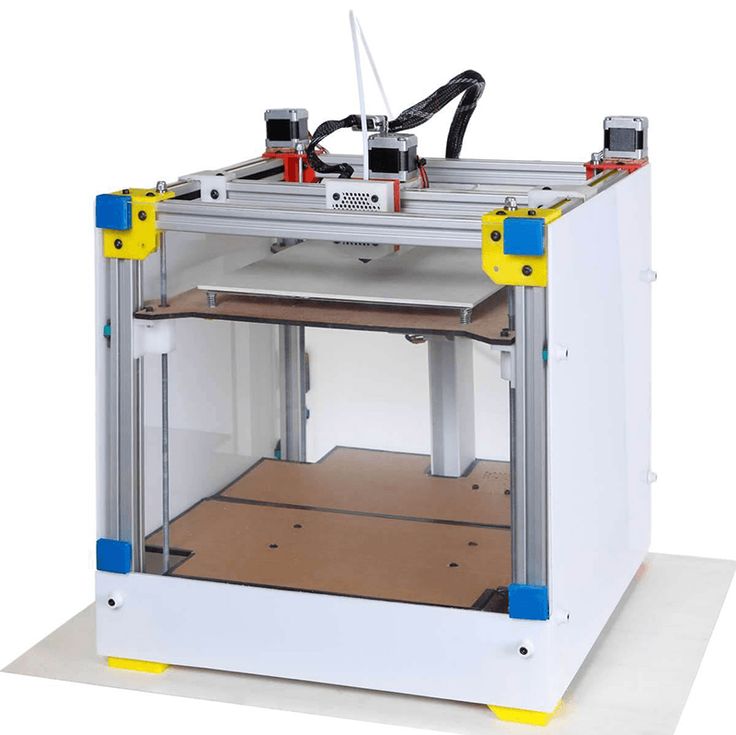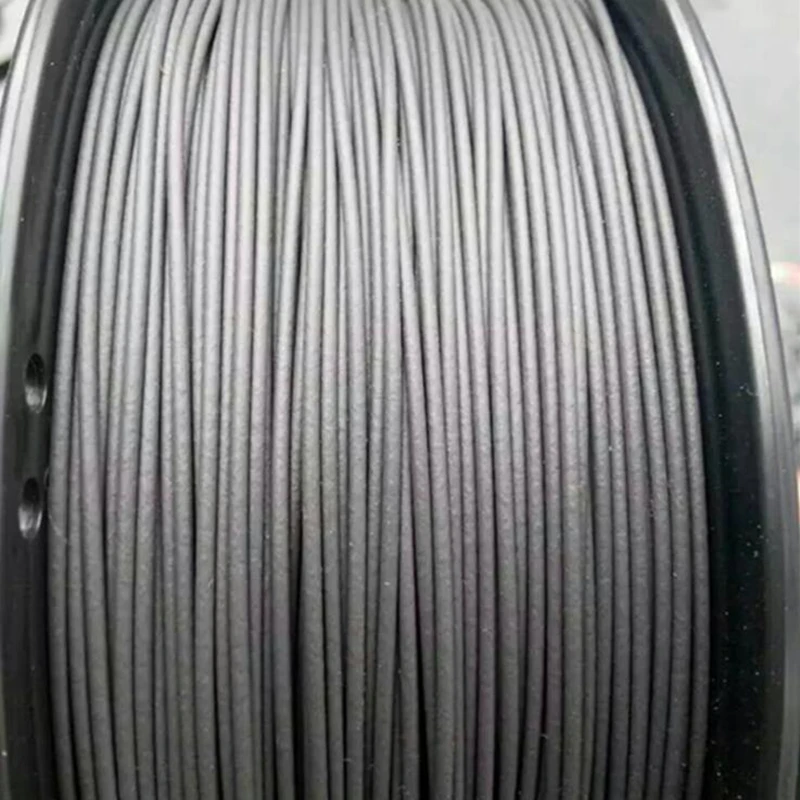Harvest technologies 3d printing
Stratasys to Acquire Solid Concepts and Harvest Technologies :: Stratasys Ltd. (SSYS)
Transactions Create a Leading Strategic Platform to Meet Customers’ Additive Manufacturing Needs, Driving Further Adoption of Stratasys’ Additive Manufacturing Solutions
Provides Stratasys with Significant Manufacturing and End-Use Parts Production Capabilities, Capacity and Process Knowhow
Transactions Expected to be Accretive to Non-GAAP Earnings Per Share Within First 12 Months After Closing
MINNEAPOLIS & REHOVOT, Israel--(BUSINESS WIRE)-- Stratasys Ltd. (NASDAQ:SSYS), a leading global provider of 3D printing and additive manufacturing solutions, today announced that it has entered into definitive agreements to acquire two privately-held companies, Solid Concepts Inc. and Harvest Technologies. Solid Concepts is the largest independent additive manufacturing service bureau in North America and a fast-growing partner to RedEye, Stratasys’ existing digital manufacturing service business. The transactions are expected to be completed early in the upcoming third quarter, subject to customary closing conditions, and are expected to be accretive to Stratasys’ Non-GAAP earnings per share within the first 12 months after closing. Upon completion of the transactions, Stratasys will combine Solid Concepts and Harvest Technologies with RedEye to establish one additive manufacturing services business unit. Joe Allison, President of Solid Concepts, will join the Stratasys management team and lead the combined parts business, supported by the strong management teams of Solid Concepts, Harvest Technologies, and RedEye.
Solid Concepts and Harvest Technologies are leading providers of additive manufacturing services.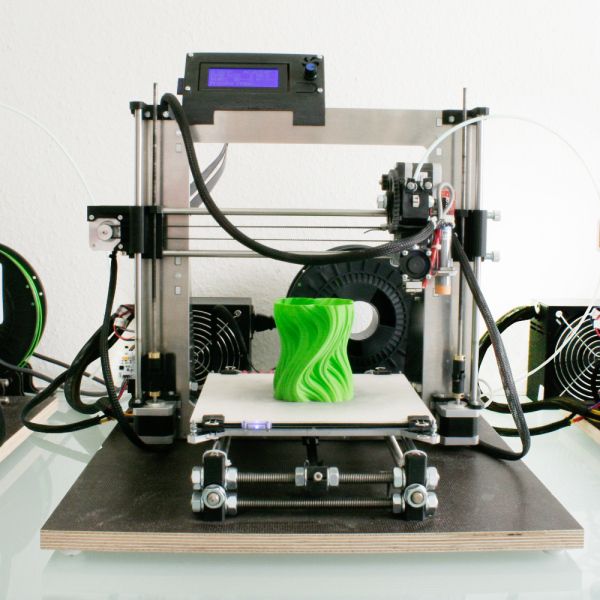 With the addition of Solid Concepts and Harvest Technologies, Stratasys is creating a leading strategic platform focused on meeting customers’ additive manufacturing needs through an expanded technology and business offering. Solid Concepts and Harvest Technologies provide Stratasys with significant manufacturing and end-use parts production capabilities, infrastructure, capacity and process knowhow, which are expected to accelerate and enable further adoption of additive manufacturing. The combination of Solid Concepts’ deep knowledge of manufacturing and vertical focus, such as medical and aerospace, and Harvest Technologies’ experience in parts production, as well as materials and systems knowhow, together with RedEye, strengthens Stratasys’ direct digital manufacturing and parts production expertise.
With the addition of Solid Concepts and Harvest Technologies, Stratasys is creating a leading strategic platform focused on meeting customers’ additive manufacturing needs through an expanded technology and business offering. Solid Concepts and Harvest Technologies provide Stratasys with significant manufacturing and end-use parts production capabilities, infrastructure, capacity and process knowhow, which are expected to accelerate and enable further adoption of additive manufacturing. The combination of Solid Concepts’ deep knowledge of manufacturing and vertical focus, such as medical and aerospace, and Harvest Technologies’ experience in parts production, as well as materials and systems knowhow, together with RedEye, strengthens Stratasys’ direct digital manufacturing and parts production expertise.
Solid Concepts, based in Valencia, California, is an industry pioneer, having provided additive manufacturing solutions to customers since its founding in 1991.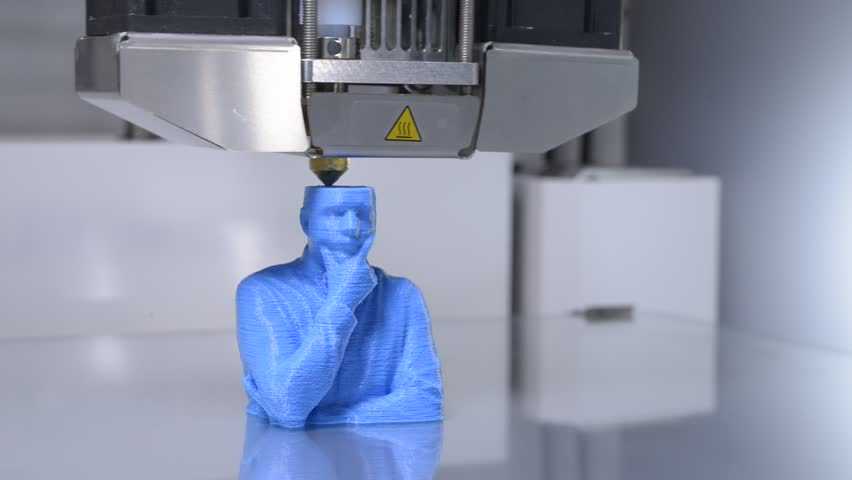 Solid Concepts has developed extensive U.S.-based capacity and infrastructure with six U.S. facilities staffed by approximately 450 employees. Solid Concepts maintains a broad variety of technology platforms and processes for additive manufacturing and serves a diverse customer base across a wide range of verticals, including medical, aerospace, and industrial, among others. Solid Concepts provides an overarching platform that, with the integration of Harvest Technologies and RedEye, is expected to create a comprehensive additive manufacturing solution provider. Solid Concepts generated revenues of approximately $65 million in 2013.
Solid Concepts has developed extensive U.S.-based capacity and infrastructure with six U.S. facilities staffed by approximately 450 employees. Solid Concepts maintains a broad variety of technology platforms and processes for additive manufacturing and serves a diverse customer base across a wide range of verticals, including medical, aerospace, and industrial, among others. Solid Concepts provides an overarching platform that, with the integration of Harvest Technologies and RedEye, is expected to create a comprehensive additive manufacturing solution provider. Solid Concepts generated revenues of approximately $65 million in 2013.
Harvest Technologies, based in Belton, Texas, is a specialty additive manufacturing service bureau established in 1995, with approximately 80 employees. Harvest Technologies has deep manufacturing process knowhow and focuses on advanced end use parts applications.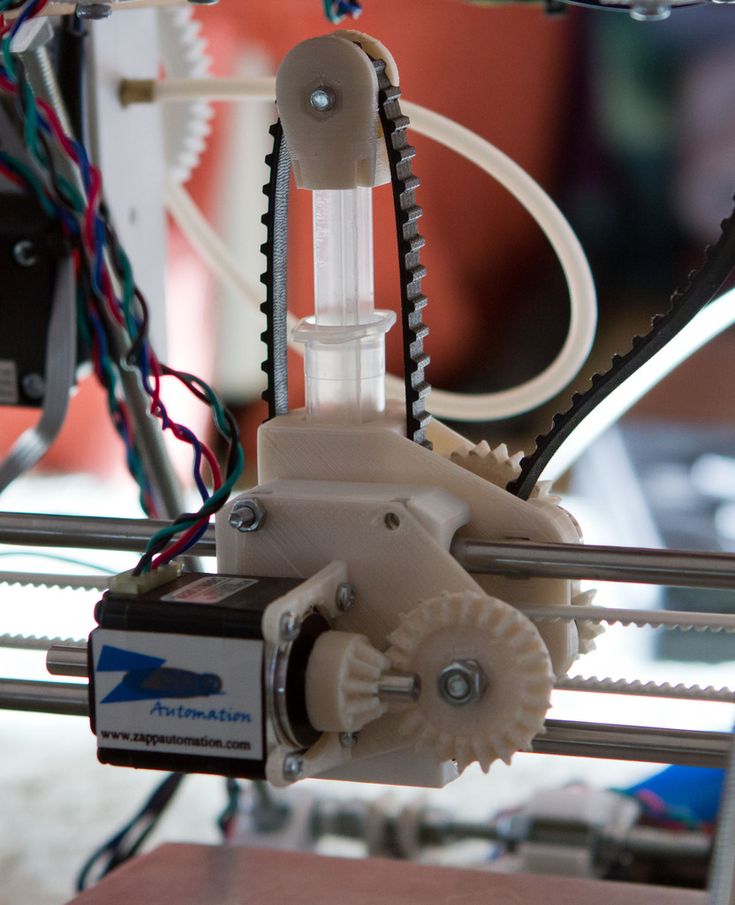 Harvest Technologies was the first additive manufacturing company in North America to become AS9100/ISO 9001 certified, and continues to produce end-use parts for multiple industries.
Harvest Technologies was the first additive manufacturing company in North America to become AS9100/ISO 9001 certified, and continues to produce end-use parts for multiple industries.
Under the terms of the definitive agreement with Solid Concepts, Stratasys will acquire Solid Concepts for total consideration of up to $295 million, including a payment on closing of $172 million (or, if settled in cash, part on closing and part six months after closing), deferred payments of $60 million and up to $63 million in retention-related payments. Subject to certain requirements for cash payments, Stratasys retains discretion to settle any of the amounts payable under both the definitive agreement and the retention plan in either Stratasys shares, cash or any combination of the two. The value of a portion of the purchase price as well as the deferred and retention-related payments may increase or decrease in line with the market price of Stratasys shares.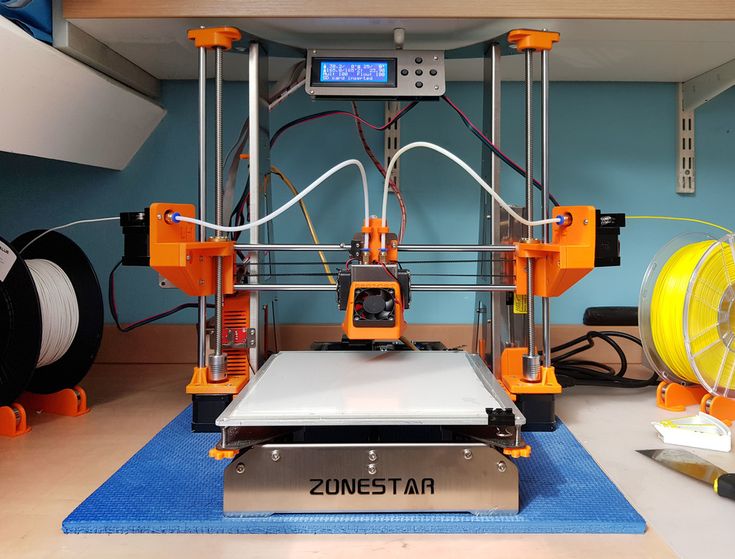
Under the terms of the definitive agreement with Harvest Technologies, Stratasys will acquire Harvest Technologies for an undisclosed amount, including retention-related payments, payable in cash, shares or a combination thereof.
“We are pleased to announce these strategic transactions, which will enable us to provide customers with a comprehensive offering that addresses a broad spectrum of additive manufacturing solutions,” said Stratasys CEO David Reis. “With Solid Concepts and Harvest Technologies, together with RedEye, we expect to create a strategic platform to meet our customers’ additive manufacturing requirements by significantly expanding our offering, targeting new applications, and strengthening our customer relationships. As our customers’ requirements continue to expand, we must evolve to create full service offerings that provide a variety of technologies and custom manufacturing solutions and focus on high-end production applications. Solid Concepts and Harvest Technologies are industry pioneers and innovators in the additive manufacturing space. In acquiring these two unique companies, Stratasys is gaining a broad solutions offering with technologies and decades of application and manufacturing experience which, together with RedEye, are expected to create an industry-leading additive manufacturing and parts production platform.”
Solid Concepts and Harvest Technologies are industry pioneers and innovators in the additive manufacturing space. In acquiring these two unique companies, Stratasys is gaining a broad solutions offering with technologies and decades of application and manufacturing experience which, together with RedEye, are expected to create an industry-leading additive manufacturing and parts production platform.”
“These transactions are consistent with our core strategic imperatives and M&A strategy, which is focused on acquiring leading companies to support our goal of continued leadership in the segments in which we operate, as well as reaching new niche verticals,” Mr. Reis continued. “We will apply our integration expertise to combine Solid Concepts and Harvest Technologies with our existing RedEye digital manufacturing service business to form a single business unit focused on additive manufacturing services.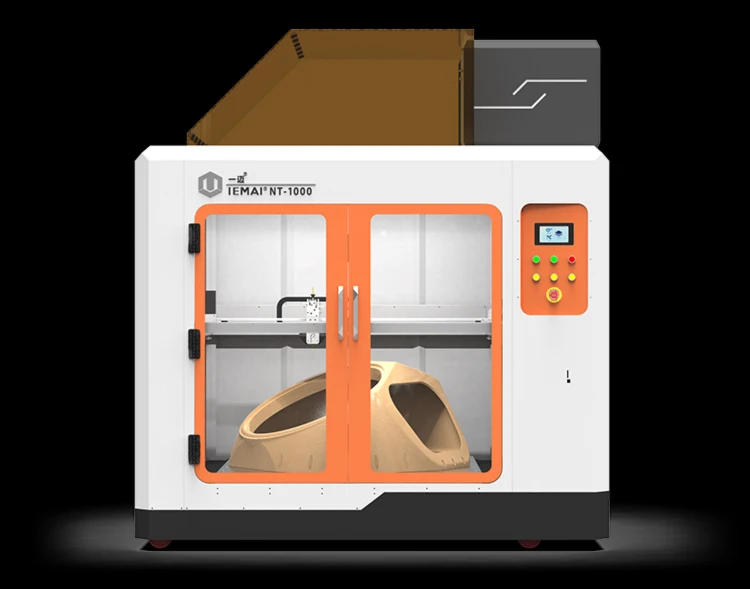 Importantly, with our shared cultures of innovation and customer service, we believe this will be a smooth transition. We look forward to welcoming the talented teams of Solid Concepts and Harvest Technologies to Stratasys – we are confident we have a very bright future together.”
Importantly, with our shared cultures of innovation and customer service, we believe this will be a smooth transition. We look forward to welcoming the talented teams of Solid Concepts and Harvest Technologies to Stratasys – we are confident we have a very bright future together.”
Joe Allison, President of Solid Concepts, said, “We are excited to be joining forces with Stratasys, a global leader in 3D printing and additive manufacturing. As part of a larger company with a broad customer reach and market coverage, Solid Concepts will be even better positioned to meet the significant demand for our additive manufacturing offerings. We look forward to working with Stratasys to ensure a smooth and orderly integration of our businesses.”
David K. Leigh, President of Harvest Technologies, said, “We are delighted to join forces with Stratasys and Solid Concepts in a transaction that will enhance Harvest Technologies’ leadership in producing end use parts using the most advanced additive manufacturing technologies and processes.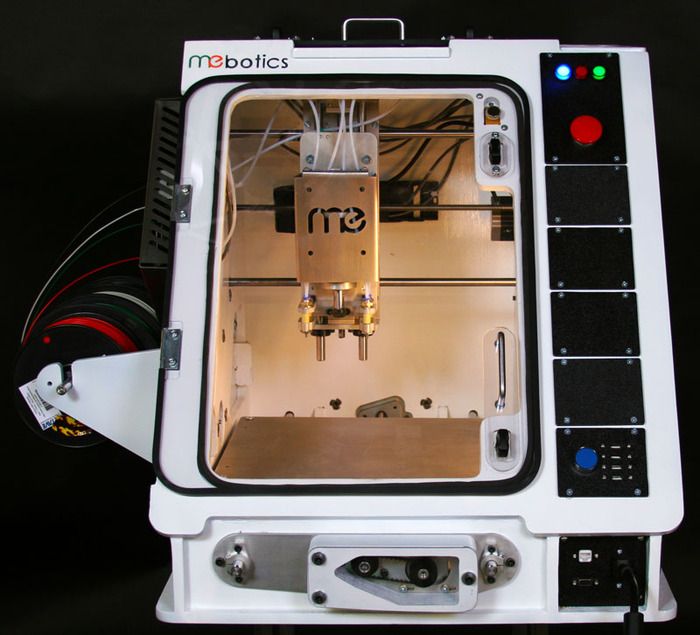 ”
”
Benefits of the Transaction
- Creates a leading strategic platform to meet a broad range of customers’ additive manufacturing needs. The acquisitions of Solid Concepts and Harvest Technologies provide Stratasys with the ability to offer customers a more comprehensive solution based on multiple technologies that address a broad spectrum of additive manufacturing needs. The combination of Solid Concepts’ deep knowledge of manufacturing and vertical focus, such as medical and aerospace, and Harvest Technologies’ experience in parts production, as well as materials and systems knowhow, strengthens Stratasys’ direct digital manufacturing and parts production expertise.
- Provides Stratasys opportunities to leverage significant manufacturing services capabilities. With their capacity, knowledge and experience, Solid Concepts and Harvest Technologies are expected to allow Stratasys to expand into a broad range of capabilities and applications expertise across a wide range of new and existing applications.
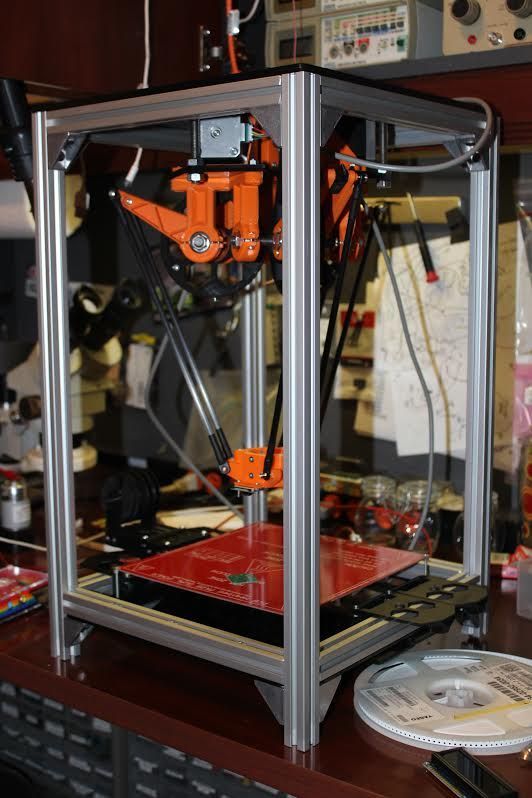 The strong and experienced management teams of Solid Concepts and Harvest Technologies, combined with RedEye, provide deep process knowhow around using additive manufacturing for production applications.
The strong and experienced management teams of Solid Concepts and Harvest Technologies, combined with RedEye, provide deep process knowhow around using additive manufacturing for production applications. - Creates opportunity for cross-selling synergies. Once Solid Concepts and Harvest Technologies, together with RedEye, have been integrated into a single business unit, Stratasys will leverage cross sell opportunities that are expected to generate long-term synergies with the company’s system business.
- Compelling financial benefits. Both Solid Concepts and Harvest Technologies have strong financial track records. The transactions are expected to be accretive to Stratasys’ non-GAAP earnings per share within the first 12 months after closing.
Investor Conference Call and Webcast
A conference call to discuss the acquisitions is scheduled for Wednesday, April 2, 2014 at 7:00 a. m. Central Time / 8:00 a.m. Eastern Time / 3:00 p.m. Israel Time. To participate by phone, the U.S. dial-in number is +1 (866) 610-1072, and the international dial-in number is +1 (973) 935-2840. Please reference conference ID# 21538988. Participants are advised to dial into the call at least 10 minutes prior to the call start time to register. The conference call will also be available via live webcast on the Stratasys website at Stratasys.com under the "Investors" tab. A presentation will accompany the conference call.
m. Central Time / 8:00 a.m. Eastern Time / 3:00 p.m. Israel Time. To participate by phone, the U.S. dial-in number is +1 (866) 610-1072, and the international dial-in number is +1 (973) 935-2840. Please reference conference ID# 21538988. Participants are advised to dial into the call at least 10 minutes prior to the call start time to register. The conference call will also be available via live webcast on the Stratasys website at Stratasys.com under the "Investors" tab. A presentation will accompany the conference call.
A replay of this conference call may be accessed by webcast or by telephone. To access the replay, please dial +1 (800) 585-8367 (U.S.) or +1 (404) 537-3406 (international) and reference conference ID# 21538988. The replay and archived webcast will be available through 11:59 p.m. ET on April 9, 2014.
About Stratasys
Stratasys Ltd. (Nasdaq:SSYS), headquartered in Minneapolis, Minn. and Rehovot, Israel, is a leading global provider of 3D printing and additive manufacturing solutions. The company's patented FDM® and PolyJet™ 3D Printing technologies produce prototypes and manufactured goods directly from 3D CAD files or other 3D content. Systems include 3D printers for idea development, prototyping and direct digital manufacturing. Stratasys subsidiaries include MakerBot and Solidscape, and the company operates the RedEye digital-manufacturing service. Stratasys has more than 1800 employees, holds over 550 granted or pending additive manufacturing patents globally, and has received more than 25 awards for its technology and leadership. Online at: www.stratasys.com or http://blog.stratasys.com.
(Nasdaq:SSYS), headquartered in Minneapolis, Minn. and Rehovot, Israel, is a leading global provider of 3D printing and additive manufacturing solutions. The company's patented FDM® and PolyJet™ 3D Printing technologies produce prototypes and manufactured goods directly from 3D CAD files or other 3D content. Systems include 3D printers for idea development, prototyping and direct digital manufacturing. Stratasys subsidiaries include MakerBot and Solidscape, and the company operates the RedEye digital-manufacturing service. Stratasys has more than 1800 employees, holds over 550 granted or pending additive manufacturing patents globally, and has received more than 25 awards for its technology and leadership. Online at: www.stratasys.com or http://blog.stratasys.com.
About Solid Concepts
Solid Concepts Inc. provides custom manufacturing solutions via additive manufacturing, rapid prototyping, CNC machining, cast urethanes, injection molding and tooling.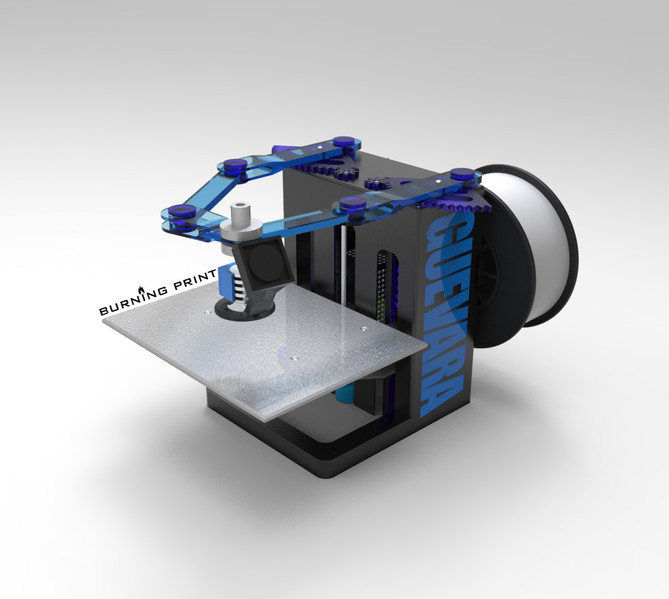 Since 1991, Solid Concepts has provided engineering expertise from multiple fields to bring success to new products in the aerospace, medical, consumer product industries and more. Capabilities in PolyJet, Stereolithography (SLA), Plastic and Metal Laser Sintering (SLS & DMLS), Fused Deposition Modeling (FDM), QuantumCast™ Cast Urethanes, CNC, Tooling and Injection Molding allow for low to high volume production of plastics, urethanes, and metals directly from design data, resulting in significant time and cost savings. ISO 9001 and AS9100 certifications. http://www.solidconcepts.com/.
Since 1991, Solid Concepts has provided engineering expertise from multiple fields to bring success to new products in the aerospace, medical, consumer product industries and more. Capabilities in PolyJet, Stereolithography (SLA), Plastic and Metal Laser Sintering (SLS & DMLS), Fused Deposition Modeling (FDM), QuantumCast™ Cast Urethanes, CNC, Tooling and Injection Molding allow for low to high volume production of plastics, urethanes, and metals directly from design data, resulting in significant time and cost savings. ISO 9001 and AS9100 certifications. http://www.solidconcepts.com/.
About Harvest Technologies
Harvest Technologies was founded by David K. Leigh and, his father, David E. Leigh in 1995. Now with almost 20 years of experience in the additive manufacturing industry, Harvest Technologies runs a fleet of 40 laser sintering (LS/SLS), direct metal laser sintering (DMLS), fused deposition modeling (FDM), and stereolithography (SL/SLA) machines in a cutting-edge 40,000 sq.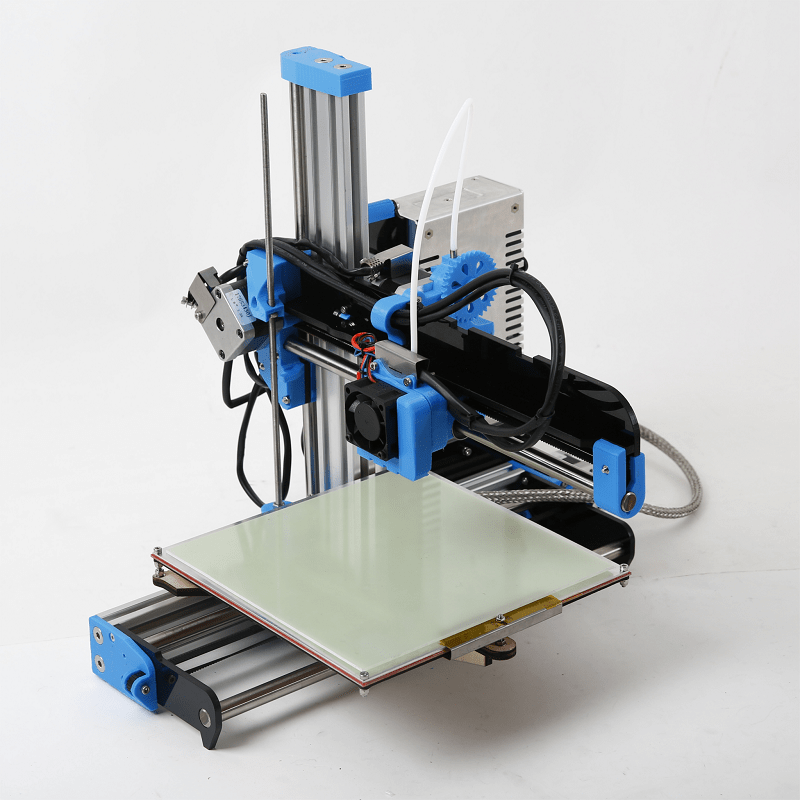 facility. It is Harvest Technologies’ mission to provide top-quality parts and customer service, while continuing to build their reputation as the most valued partner and supplier in the prototype and direct digital manufacturing trades. Harvest Technologies is an AS9100C/ISO 9001:2008 certified supplier. For more information please visit http://www.harvest-tech.com.
facility. It is Harvest Technologies’ mission to provide top-quality parts and customer service, while continuing to build their reputation as the most valued partner and supplier in the prototype and direct digital manufacturing trades. Harvest Technologies is an AS9100C/ISO 9001:2008 certified supplier. For more information please visit http://www.harvest-tech.com.
Cautionary Statement Regarding Forward-Looking Statements
Certain information included or incorporated by reference in this press release may be deemed to be "forward-looking statements" within the meaning of the Private Securities Litigation Reform Act of 1995, Section 27A of the Securities Act of 1933, and Section 21E of the Securities Exchange Act of 1934. Forward-looking statements are often characterized by the use of forward-looking terminology such as "may," "will," "expect," "anticipate," "estimate," "continue," "believe," "should," "intend," "project" or other similar words, but are not the only way these statements are identified.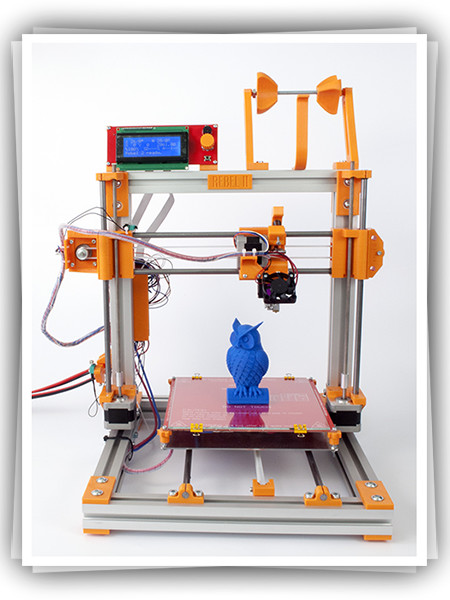 These forward-looking statements may include, but are not limited to, statements relating to the company's objectives, plans and strategies, statements that contain projections of results of operations or of financial condition (including, with respect to the Harvest Technologies and Solid Concepts merger) and all statements (other than statements of historical facts) that address activities, events or developments that the company intends, expects, projects, believes or anticipates will or may occur in the future. Forward-looking statements are not guarantees of future performance and are subject to risks and uncertainties. The company has based these forward-looking statements on assumptions and assessments made by its management in light of their experience and their perception of historical trends, current conditions, expected future developments and other factors they believe to be appropriate. Important factors that could cause actual results, developments and business decisions to differ materially from those anticipated in these forward-looking statements include, among other things: the company's ability to efficiently and successfully integrate the operations of Stratasys, Inc.
These forward-looking statements may include, but are not limited to, statements relating to the company's objectives, plans and strategies, statements that contain projections of results of operations or of financial condition (including, with respect to the Harvest Technologies and Solid Concepts merger) and all statements (other than statements of historical facts) that address activities, events or developments that the company intends, expects, projects, believes or anticipates will or may occur in the future. Forward-looking statements are not guarantees of future performance and are subject to risks and uncertainties. The company has based these forward-looking statements on assumptions and assessments made by its management in light of their experience and their perception of historical trends, current conditions, expected future developments and other factors they believe to be appropriate. Important factors that could cause actual results, developments and business decisions to differ materially from those anticipated in these forward-looking statements include, among other things: the company's ability to efficiently and successfully integrate the operations of Stratasys, Inc. and Objet Ltd. after their merger as well as the ability to successfully integrate MakerBot, Solid Concepts and Harvest Technologies and other acquired entities into Stratasys; the overall global economic environment; the impact of competition and new technologies; general market, political and economic conditions in the countries in which the company operates; projected capital expenditures and liquidity; changes in the company's strategy; government regulations and approvals; changes in customers' budgeting priorities; litigation and regulatory proceedings; and those factors referred to under "Risk Factors", "Information on the Company", "Operating and Financial Review and Prospects", and generally in the company's annual report on Form 20-F for the year ended December 31, 2013 filed with the U.S. Securities and Exchange Commission and in other reports that the Company has filed with the SEC. Readers are urged to carefully review and consider the various disclosures made in the company's SEC reports, which are designed to advise interested parties of the risks and factors that may affect its business, financial condition, results of operations and prospects.
and Objet Ltd. after their merger as well as the ability to successfully integrate MakerBot, Solid Concepts and Harvest Technologies and other acquired entities into Stratasys; the overall global economic environment; the impact of competition and new technologies; general market, political and economic conditions in the countries in which the company operates; projected capital expenditures and liquidity; changes in the company's strategy; government regulations and approvals; changes in customers' budgeting priorities; litigation and regulatory proceedings; and those factors referred to under "Risk Factors", "Information on the Company", "Operating and Financial Review and Prospects", and generally in the company's annual report on Form 20-F for the year ended December 31, 2013 filed with the U.S. Securities and Exchange Commission and in other reports that the Company has filed with the SEC. Readers are urged to carefully review and consider the various disclosures made in the company's SEC reports, which are designed to advise interested parties of the risks and factors that may affect its business, financial condition, results of operations and prospects.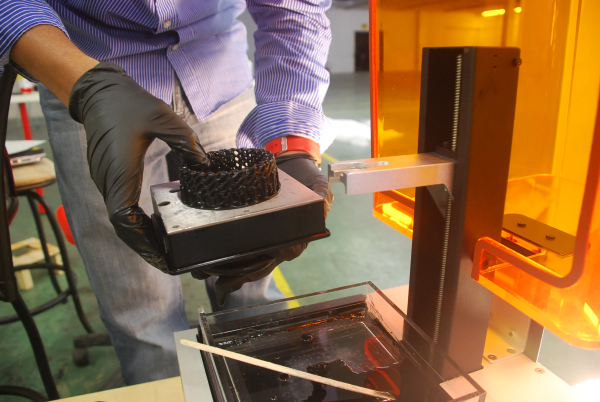 Any forward-looking statements in this press release are made as of the date hereof, and the company undertakes no obligation to publicly update or revise any forward-looking statements, whether as a result of new information, future events or otherwise, except as required by law.
Any forward-looking statements in this press release are made as of the date hereof, and the company undertakes no obligation to publicly update or revise any forward-looking statements, whether as a result of new information, future events or otherwise, except as required by law.
Stratasys
Shane Glenn, +1-952-294-3416
VP Investor Relations
or
Arita Mattsoff, +972-74-745-4000
VP Marketing
Source: Stratasys Ltd.
Released April 2, 2014
Harvest Technologies
Harvest Technologies
See, that’s what the app is perfect for.
Sounds perfect Wahhhh, I don’t wannaDundee University has used direct metal laser sintering (DMLS) to produce two historic golf clubs originally manufactured in the late 1800s.
Today is the last day to vote for Harvest Tech's #SXSW panel on#3Dprinting in the #Movies. Take a sneak peek into the panel discussion and cast your vote to see us at SXSW Interactive 2015. :)
http://panelpicker.sxsw.com/vote/35913
The U.S. Army is 3D printing synthetic cranial bones to prevent long-term brain damage from shock waves when soldiers are in battle. Read more.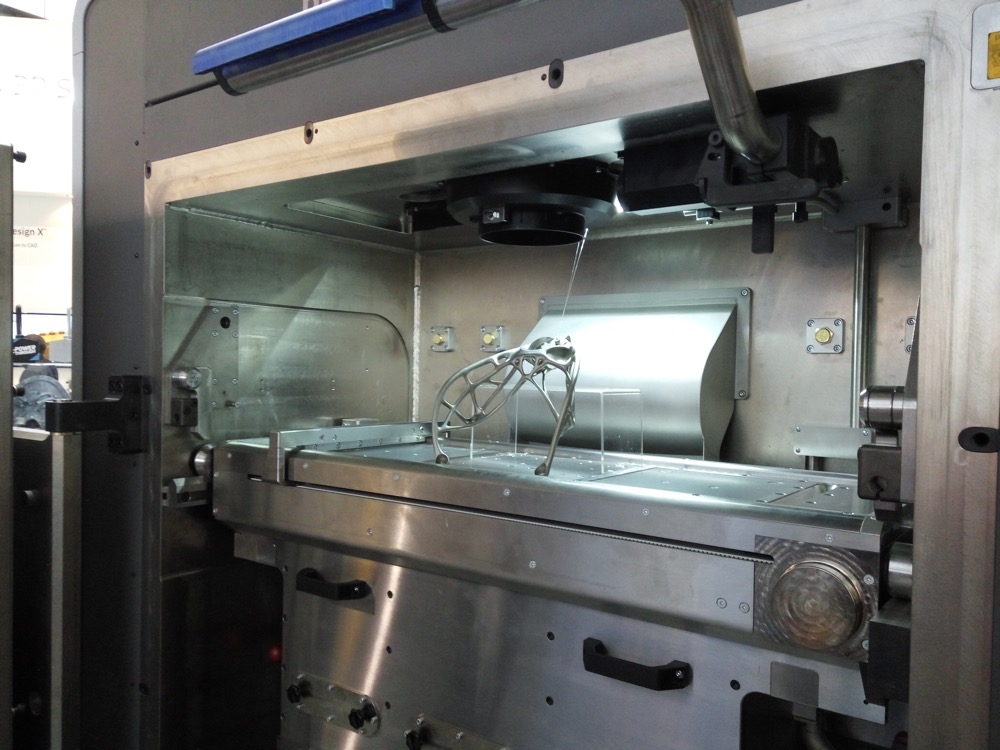
http://bit.ly/1Bc9Hhk
Learn how 3D printing is revolutionizing special effects & animation in movies. Cast your vote for our 3D printing Panel for the upcoming SXSW 2015!
http://panelpicker.sxsw.com/vote/35913
3-D printing company Stratasys shares were up 13% in pre-market trading Thursday after reporting a 67% jump in quarterly revenue.
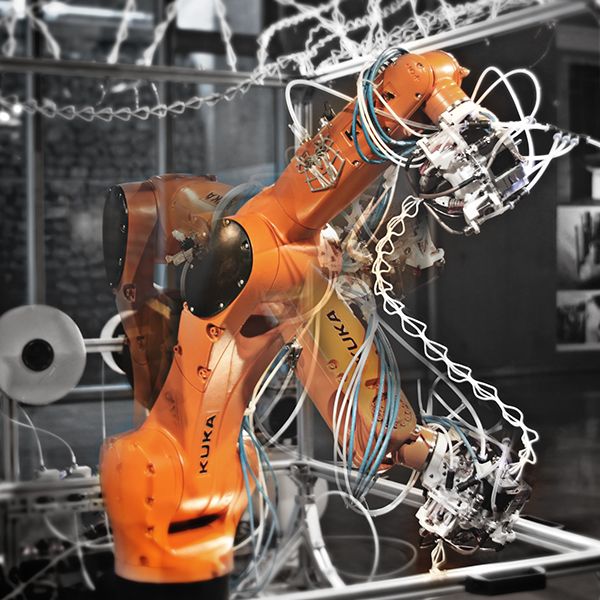
Stratasys is making great headway in the #3Dprinting industry, reporting a 67% increase in quarterly revenue. We’re proud to be part of the Stratasys team!
http://read.bi/1AXKK9o
Similar to inkjet printers, most machines in this process deposit material or binder from print heads to create three dimensional (3D) objects.
Advance your prototyping and production processes with innovative 3D printing services at Harvest Tech. Rapidly create prototypes and end-use parts with fine detail and in a variety of materials.
Learn more: http://harvest-tech.com/3d-printing.php
If you search the two terms, intellectual property and 3D printing, you will find a hefty debate on how the new world of 3d printing is attacking or liberating, depending on your perspective, the consuming public. After working through the Hasbro and Shapeways post earlier today, I decided to take a […]
Can 3D printing really “steal” away products? Read more about the hefty debate on 3D printing and intellectual property.
http://onforb.es/1sbN2Mb
Our Stratasys acquisition is complete! Harvest Tech is now joining forces with Stratasys, Solid Concepts and RedEye to establish advanced manufacturing services.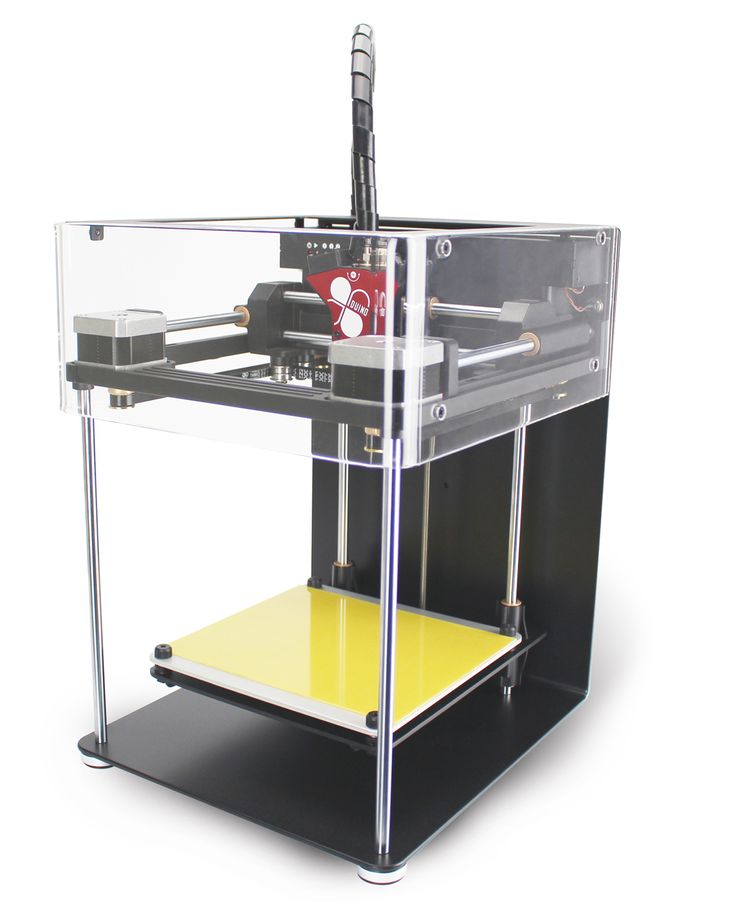 Learn more about our services & read about the acquisition.
Learn more about our services & read about the acquisition.
http://www.harvest-tech.com/news/letter-to-our-customers-harvest-technologies-acquired-by-stratasys-2/
When it comes to 3D printing, NASA certainly doesn’t want to be left out in the cold. A couple months ago, we learned that NASA was teaming with MakerBot to lau
NASA releases 3D printable models spacecrafts, moon surfaces, asteroids & more. These models are available in STL format & are free for download.
It’s simply amazing how quickly additive manufacturing technology has been progressing.
Just a few years ago, laser sintering of metals within the manufacturing
Researchers have developed a new method of 3D printing parts using several different metal alloys. Learn how this metal 3D printer could transform additive manufacturing.
http://bit.ly/1AvMeY1
What technologies underlie 3D printing?
The plethora of 3D printing techniques currently on the market does not preclude continued ongoing research to develop more innovative technologies. Although the material differs depending on the printing method used, each technology has its own advantages. They are mainly related to the specific applications for which these printers are intended.
Although the material differs depending on the printing method used, each technology has its own advantages. They are mainly related to the specific applications for which these printers are intended.
3D Printing Technology Overview
The 3D printing technologies available today are grouped into three main families. These include printing by wire deposition or extrusion (FFF, FDM), the use of liquid photosensitive resin (SLA, DLP), and finally the use of powder or sintering (SLS, SLM, DMLS).
Fusion or extrusion printing allows you to create an object layer by layer. It involves the use of plastic thread. Placed on the printhead, the latter melts and deposits superimposed layers on the print platform.
As for the liquid photosensitive resin, it is cured by projector or laser. This operation, also known as polymerization, causes the object to be created to form inside the tray containing the resin. Stereolithography (SLA) is one of the technologies that regularly uses this printing process.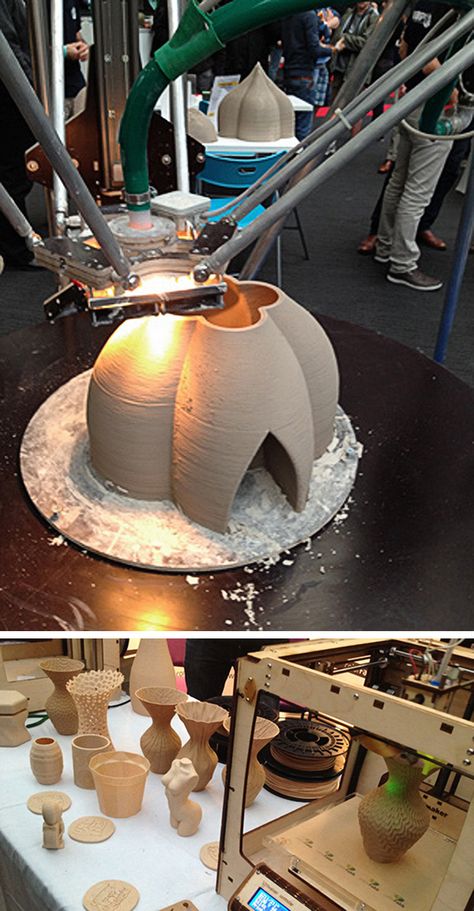 ₽
₽
An energy source - for example, a laser - melts metal powder previously placed in a 3D printer tank. The term used for this type of printing is powder sintering or laser sintering. This is a technology with several options: SLS (Selective Laser Sintering) or SLM (Selective Laser Melting).
Molten filament printing
Two expressions are used to characterize this technology. The first, FDM, comes from English (Fused Deposition Modeling).
As for the second one, FFF, it stands for Fused Filament Fabrication. The term extrusion is another name for this 3D printing process. The consumables are plastic filament (PLA or AB).
A 3D printer has a print head, also called a nozzle. It is on this nozzle that the previously heated fiber is melted. The nozzle moves along two axes, x and y, parallel to the print platform, which moves in the vertical direction. Only after the first layer is completed, the print platform lowers along its axis.
Molten thread is applied layer by layer to create a 3D object. The fusion of the various layers is due to the rapid solidification of the molten plastic. As soon as the layers of plastic are stacked on top of each other, we get a designed object, the model of which is visible on the computer screen. Extrusion can also be carried out using an energy source such as a laser and by direct application of energy. This 3D printing mode, better known by its acronym DED (Directed Energy Deposition), can be found on some industrial printers. The material pushed out by the energy source then melts before being fused into an object.
3D printing by polymerization of photosensitive resin
The use of SLA or DLP technology is typical for 3D printers using resin as the printing material. The process of their printing is polymerization. It refers to the curing of the photosensitive resin under the influence of a light source such as a laser or a light projector. The liquid resin in the printer tray hardens as a result of the reaction created by the light beams.
The print tray is located at the bottom of the tray that holds the liquid resin. A DLP projector or SLA laser emits light that hardens the resin from layer to layer. Finishing the layer allows the tray to sink further into the tray and so on until the object is made.
Having parts that require a high level of detail and resolution on the smooth side is a reason to use a 3D printer such as an SLA or DLP printer. Areas such as jewelry and medicine are the most common areas where this printing process is used. The production of molds intended for the manufacture of jewelry or dentures requires both precision and finesse.
Only resin polymerization makes it possible to distinguish between the two categories of SLA and DLP printers. On a DLP printer, the resin hardens layer by layer. In an SLA printer, on the other hand, it solidifies point by point. In addition, a DLP printer uses a projector, while an SLA printer uses a laser to print.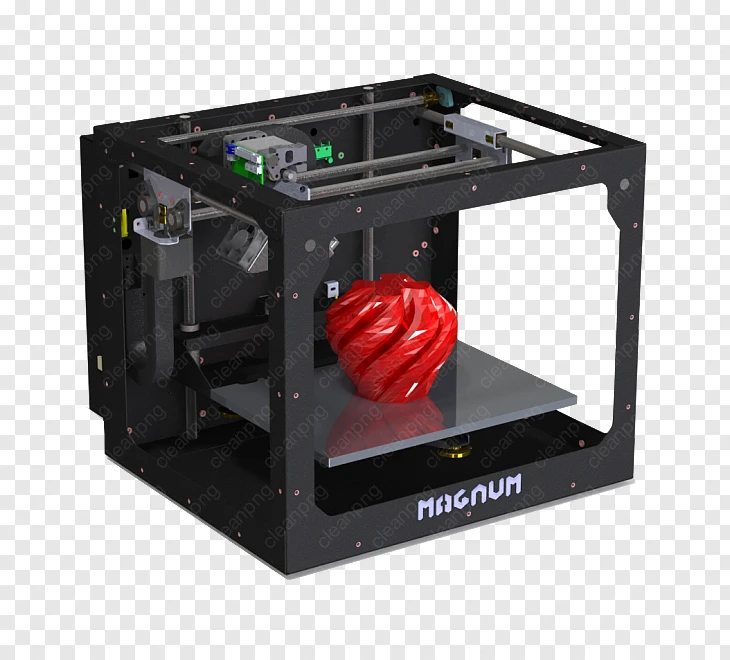
3D powder melt printing
Four technologies use this 3D printing process. These are powder sintering and melting, material grinding, paper lamination and, finally, 3D bioprinting.
The use of metal powder as printing material is common in the industrial sector. Selective laser sintering or selective laser melting are two 3D printing technologies that use powder. In the field of aviation, for example, this technology allows the production of highly complex parts intended for use in aircraft.
Spraying or inkjet printing of material is a printing process in which molten material is deposited on a printing platform. The object is formed by the layer-by-layer solidification of the previously melted material. Multi-Jet Modeling (MJM) is another name for this printing method.
The 3D printing technology known as lamination uses paper or aluminum foil as the material. Objects produced using this technique are distinguished by the perspective of details and colors. The decoration and toy manufacturing sector are those who regularly use this technology.
The decoration and toy manufacturing sector are those who regularly use this technology.
The creation of living cells or organic tissues is the field of bioprinting experiments. This scientific process represents a real revolution in the field of medicine. Ultimately, bioprinting aims to produce functional organs or living tissues. While this technology is at the experimental stage. 3D bioprinters with this printing ability are not yet a reality. However, if they existed, such machines would make it possible to create organs and treat many pathologies.
Source
Tags:
3D printing technologies, 3D wire deposition or extrusion printing (FFF, FDM), 3D liquid photosensitive resin printing (SLA, DLP), 3D printer, 3D hot melt printing , 3D bioprinting
3D printing technologies - FDM, FFF, SLA, DLP, PolyJet, CJP, SLS, SLM
FUSED DEPOSITION MODELING PRINT TECHNOLOGY – + FDM
One of the most popular, simple and cheap 3D printing technologies is Fused Depsition Modeling.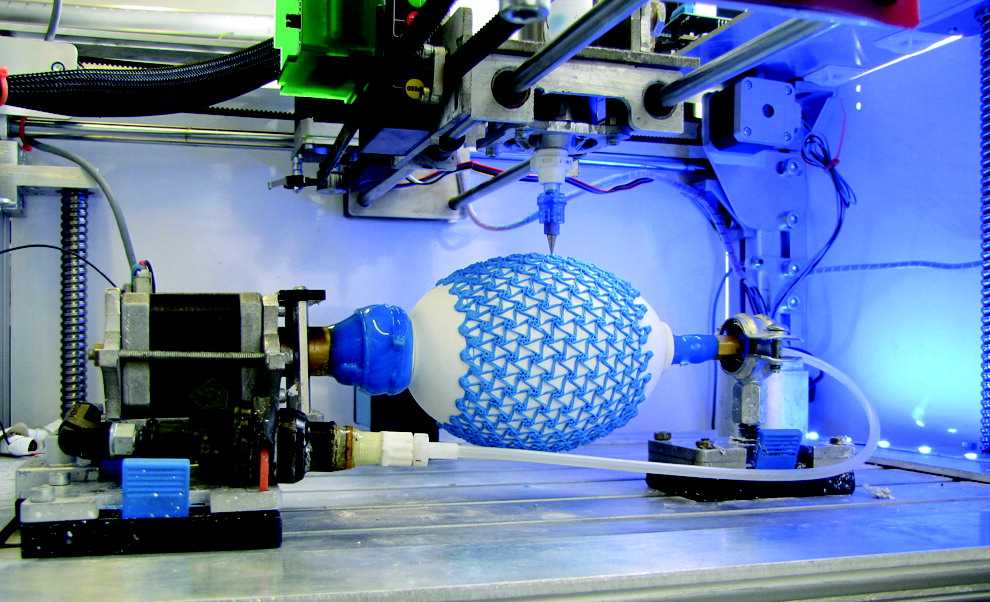 The technology was invented more than 20 years ago and implemented by Stratasys, and still it remains the most popular. The principle of building a prototype using this method is simple and clear. The simulated 3D object in STL format is transferred to the 3D printer software. After placing the model in a virtual working chamber (automatically or manually), cutting the model into horizontal layers, the 3D printing process begins. The extruder print head melts the filament, laying down layer by layer according to the model data. If necessary, before starting printing, auxiliary structures (supports) are automatically or manually placed on a virtual 3D model, which, after printing, can be removed with a special solution or manually.
The technology was invented more than 20 years ago and implemented by Stratasys, and still it remains the most popular. The principle of building a prototype using this method is simple and clear. The simulated 3D object in STL format is transferred to the 3D printer software. After placing the model in a virtual working chamber (automatically or manually), cutting the model into horizontal layers, the 3D printing process begins. The extruder print head melts the filament, laying down layer by layer according to the model data. If necessary, before starting printing, auxiliary structures (supports) are automatically or manually placed on a virtual 3D model, which, after printing, can be removed with a special solution or manually.
There are many types of equipment that print using this technology. They differ in terms of accuracy, the number of print heads, the size of the working platform, the presence or absence of a closed working chamber, consumable options, etc. There are models that support the ability to use different materials when printing. There are also industrial FDM 3D printers and personal ones.
There are also industrial FDM 3D printers and personal ones.
The following materials can be used in FDM 3D printing:
- ABS
- PLA
- SBS plastic
- Nylon
- Polycarbonate
- HIPS support material
- PVA support material
- PETG plastic
- FLEX rubber-like plastic
- RUBBER plastic with rubber properties
The most popular materials are ABS and PLA. Products printed using FDM technology are characterized by elasticity, strength and stable physical characteristics, depending on the selected material. The construction accuracy varies from 0.027mm to 1mm. As a rule, the printed object has a layered (ribbed) surface, the severity of which depends on the thickness of one layer. This effect can be eliminated by post-processing with chemicals or grinding.
The advantages of FDM 3D printing technology include sufficient speed and ease of manufacture of products, safety, high accuracy, a wide choice of materials, as well as ease of use and maintenance of equipment. In addition, consumables for printing in this way are affordable. All this together makes this technology the most highly competitive and affordable in economic terms.
In addition, consumables for printing in this way are affordable. All this together makes this technology the most highly competitive and affordable in economic terms.
FDM 3D printing technology can be used for rapid prototyping and even small series production. Depending on the selected consumable material, this technology can be used to create parts of mechanisms, toys, interior items, jewelry, souvenirs and much more. The use of high-strength engineering thermoplastics makes it possible to apply this 3D printing method to products used in the aerospace industry.
Our company has several 3D printers working on this technology. You can order high-quality 3D printing using FDM technology from us with any of the available materials and in any available color option. We guarantee you the quality and efficiency of order execution of any degree of complexity.
To order 3D printing using FDM technology, you need to send us a file in STL format. Trust our professionalism and take advantage of the most affordable 3D printing.
STEREOLITHOGRAPHY PRINT TECHNOLOGY – + SLA
SLA 3D printing technology or laser stereolithography is based on the layer-by-layer curing of a liquid photopolymer under the action of a laser beam. The technology was invented in 1986 by Charles W. Hull, who founded 3D Systems, which manufactures 3D printers that print using this technique.
Photopolymer, which in this case acts as a consumable, is a resinous substance that changes its properties under the influence of ultraviolet radiation - it polymerizes and hardens. In this case, the wavelength and time of exposure to radiation will depend on the environmental conditions and the specific material.
The principle of building a model using laser stereolithography technology at the initial level is similar to any other - a modeled object in STL format is loaded into the 3D printer software, placed in a virtual working chamber and cut into layers. Photopolymer resin is poured into a special container. It contains a working platform on which the part will be built. Initially, the working platform is set so that it is covered with the thinnest layer of photopolymer (0.05-0.13 mm). This will be the size of the layer when printed. Then the laser is turned on, it irradiates the areas that will later become parts of the finished product. As a result of irradiation, the material hardens and the working platform sinks to the extent of the layer. The algorithm repeats again until all programmed layers are exhausted. Then the finished product is immersed in a special bath, into which a composition is poured to remove excess elements. And at the end, the product is again irradiated so that it gains maximum strength.
Photopolymer resin is poured into a special container. It contains a working platform on which the part will be built. Initially, the working platform is set so that it is covered with the thinnest layer of photopolymer (0.05-0.13 mm). This will be the size of the layer when printed. Then the laser is turned on, it irradiates the areas that will later become parts of the finished product. As a result of irradiation, the material hardens and the working platform sinks to the extent of the layer. The algorithm repeats again until all programmed layers are exhausted. Then the finished product is immersed in a special bath, into which a composition is poured to remove excess elements. And at the end, the product is again irradiated so that it gains maximum strength.
Stereolithography, like most other 3D printing technologies, requires supports. After printing is completed, they are removed manually.
The main advantages of stereolithography technology are the highest precision and the ability to create the smallest and thin-walled objects. The technique is distinguished by easy post-processing of products and their almost perfect surface. The disadvantage of this technology is the impossibility of using several materials at once. Color printing is also not possible. The properties of the model and its color will determine the initial characteristics of one photopolymer. In addition, the cost of such printing and equipment is not cheap.
The technique is distinguished by easy post-processing of products and their almost perfect surface. The disadvantage of this technology is the impossibility of using several materials at once. Color printing is also not possible. The properties of the model and its color will determine the initial characteristics of one photopolymer. In addition, the cost of such printing and equipment is not cheap.
Due to the fact that stereolithography allows you to get a model of almost any degree of complexity, the main scope of this 3D printing is research. And due to the highest accuracy and detail, this technique is used in medicine, in particular in dentistry. Also, printed models are in demand in art, jewelry, museum work and restoration. There are photopolymers that can be used to print molded models. The model printed on a 3D printer, in this case, is poured with molding sand and placed in an oven for annealing at a temperature of 1000 degrees. As a result, the polymer burns out without leaving a trace, and the resulting form can be used for pouring metal under vacuum.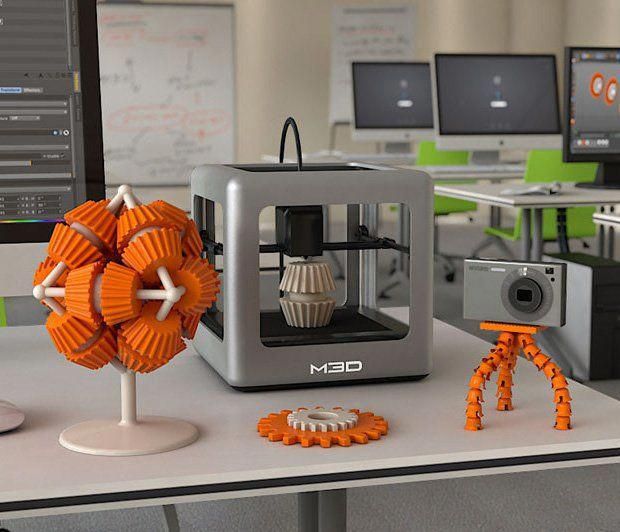 As the metal cools, the mold breaks and the metal part is removed.
As the metal cools, the mold breaks and the metal part is removed.
In our company you can order 3D printing using SLA technology. We have in our arsenal professional 3D printers using this technology and a wide range of photopolymer resins with various characteristics for 3D printing. We guarantee you high quality and prompt execution of the order. To order 3D printing using the laser stereolithography method, you need to provide us with a file in STL format.
Get the most out of high-precision and highly detailed stereolithographic 3D printing.
DIGITAL LIGHT PROCESSING PRINT TECHNOLOGY – + DLP
DLP 3D printing is one of the most accurate and fastest 3D printing methods. It is based on the technology that Larry Hornbeck invented for multimedia projectors. The peculiarity lies in the use of a special mirror matrix. Each individual pixel of this matrix is a microscopic mirror.
DLP stands for Digital Light Processing, which means "Digital Light Processing".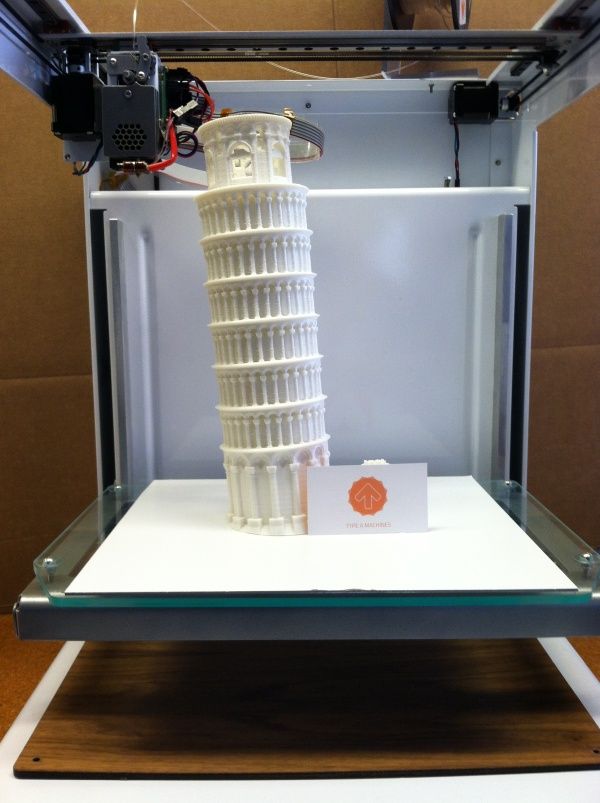 Thus, this technology is one of the varieties of photopolymer 3D printing and photopolymer resin is used as a consumable. This resin is irradiated with projected light from the LEDs and hardens. The technology is very similar to stereolithography. However, with SLA 3D printing, each layer is, as it were, loomed with laser beams. And in DLP technology, the layer is completely projected onto a photopolymer using the same matrix with micromirrors, that is, this method is more like stamping. Thus, while maintaining the highest accuracy of 3D printing, it was possible to significantly increase its speed. At the moment, the speed of DLP printing is several times higher than FDM, SLM and SLA printing. For this reason, the DLP 3D printing technique is one of the most promising.
Thus, this technology is one of the varieties of photopolymer 3D printing and photopolymer resin is used as a consumable. This resin is irradiated with projected light from the LEDs and hardens. The technology is very similar to stereolithography. However, with SLA 3D printing, each layer is, as it were, loomed with laser beams. And in DLP technology, the layer is completely projected onto a photopolymer using the same matrix with micromirrors, that is, this method is more like stamping. Thus, while maintaining the highest accuracy of 3D printing, it was possible to significantly increase its speed. At the moment, the speed of DLP printing is several times higher than FDM, SLM and SLA printing. For this reason, the DLP 3D printing technique is one of the most promising.
The thickness of one layer when printing using DLP technology is 10-15 microns, which is basically similar to the indicators for SLA 3D printing technology. For comparison, the FDM method implies a minimum thickness of at least 50 microns.
Since DLP printers are the main competitors of SLA printing, their application is about the same. They can print products for dentistry, jewelry, complex designs and even souvenirs. The technology is also in demand in the research area.
Photopolymers used in 3D printing by this method are diverse, and you can choose a material with the desired characteristics. For example, there are materials that mimic the properties of ABS plastic, hard engineering plastics, and even rubber. However, it is important to know that in some cases, under the influence of light, photopolymer products can crack and become brittle. This technology implies the impossibility of using several materials at once. Color printing is also not possible. The properties of the model and its color will determine the initial characteristics of one photopolymer.
However, there is also a drawback to DLP technology - as in the case of SLA 3D printers, the cost of equipment is very high, as in principle the price of photopolymers. Not every, even a large company, can afford such a 3D printer.
Not every, even a large company, can afford such a 3D printer.
But this does not mean at all that you will not be able to take advantage of the speed and advantages of DLP printing, because you have the opportunity to order 3D printing on such a 3D printer in our company. To do this, you just need to provide us with an STL file with the desired model. We guarantee you prompt execution of the order and high quality.
Enjoy high-quality, fast, high-precision DLP printing.
PRINT TECHNOLOGY LED DISPLAY – + LED
One of the varieties of DLP 3D printing technology is LED 3D printing. That is, this method is based on the same digital light processing (as Digital Light Processing stands for). However, in devices for LED 3D printing, instead of a mirror chipped matrix, there is an LED display that immediately highlights a whole layer on the material, like a kind of light stamp. Using an LED display allows you to increase the speed of 3D printing.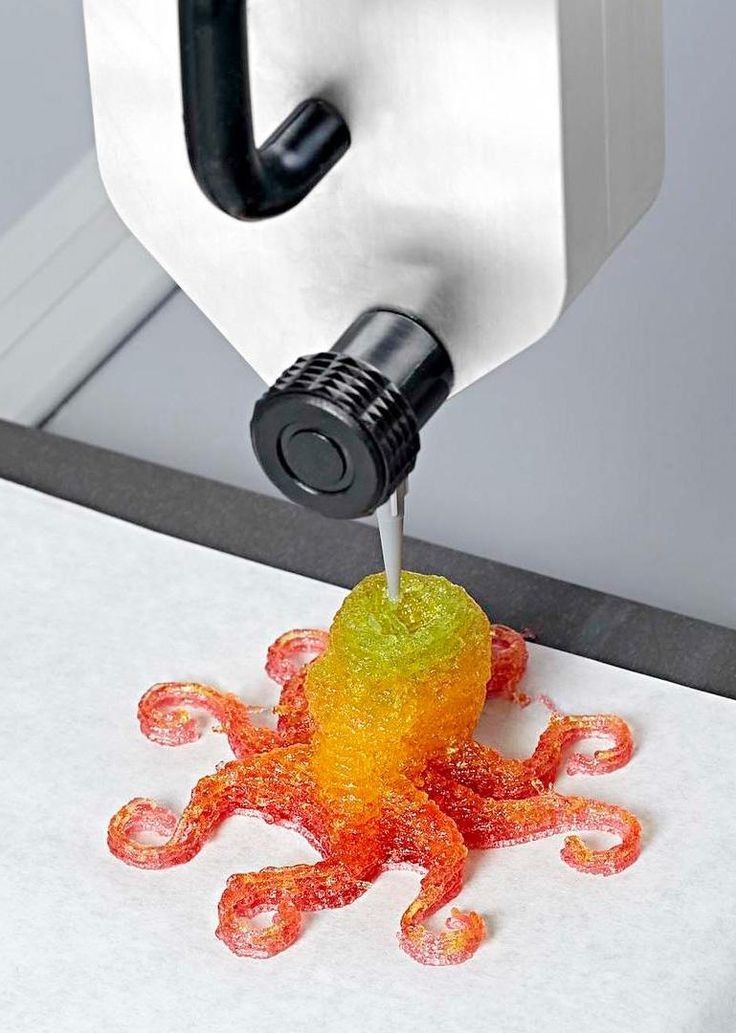 So it takes about 10-15 minutes to 3D print 2.5 cm along the Z-axis, and it's really fast. Although the print speed in any case will directly depend on the thickness of one layer.
So it takes about 10-15 minutes to 3D print 2.5 cm along the Z-axis, and it's really fast. Although the print speed in any case will directly depend on the thickness of one layer.
As a consumable material, a photopolymer resin is used, which polymerizes under the action of ultraviolet light, that is, it changes its qualities, passing from a semi-liquid state to a solid one. There are many options for photopolymers, among which there are materials that, after the polymerization process, imitate the characteristics of solid, including engineering plastics. There are also those that are very similar to classic rubber after hardening, that is, they have the same strength and elasticity indicators. You can also choose biocompatible photopolymers. When choosing a material for printing, you should be guided by the technical characteristics and scope of a particular photopolymer.
Like any other photopolymer 3D printing, LED technology is characterized by the highest precision and detail.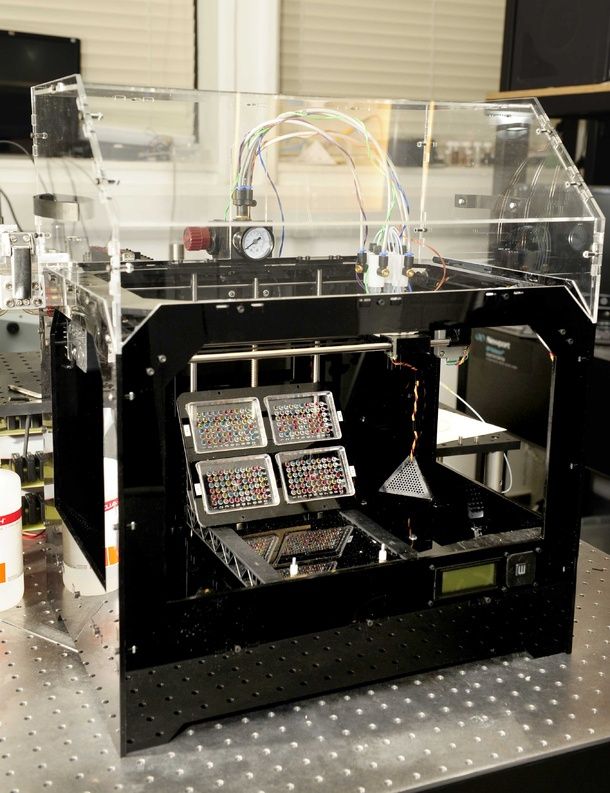 The thickness of one layer is only 10-15 microns. With its help, you can print thin-walled products, objects with complex geometry. Photopolymers practically do not shrink and do not change their geometry after hardening, and this is also an advantage, especially when it is necessary to print anatomically accurate models. The DLP LED 3D printing technology itself, although it provides for a layer-by-layer method for creating a model, still does not differ in pronounced layering of the finished model. The surface is almost perfectly smooth, requiring no additional processing.
The thickness of one layer is only 10-15 microns. With its help, you can print thin-walled products, objects with complex geometry. Photopolymers practically do not shrink and do not change their geometry after hardening, and this is also an advantage, especially when it is necessary to print anatomically accurate models. The DLP LED 3D printing technology itself, although it provides for a layer-by-layer method for creating a model, still does not differ in pronounced layering of the finished model. The surface is almost perfectly smooth, requiring no additional processing.
If complex objects are being printed, support must be used. They can be set in automatic or manual mode immediately before printing during the positioning of the model in the virtual working chamber. These supports are subsequently removed manually.
LED technology implies the impossibility of using several materials at once. Color 3D printing is also not possible. The properties of the finished prototype and its color will determine the initial characteristics of the photopolymer used.
The field of application of LED 3D printing is basically the same as the field of use of DLP printing, since this technology is, in fact, its improvement. The technology is in demand in the production of hearing aids and earmolds, in dentistry and orthodontics, as well as in jewelry. Due to the high accuracy and detail of 3D objects printed using this technology, products will also be in demand in the field of research and engineering activities.
LED 3D printer is very expensive. However, this does not mean that its benefits are not available to you. You can order 3D printing using LED technology in our company. We offer you a large selection of photopolymer resins for printing and guarantee the high quality of models, in full compliance with the provided STL-file, and the prompt execution of the order.
Take full advantage of LED technology with our help.
POLYJET PRINT TECHNOLOGY – + PJ
PolyJet is a revolutionary 3D printing technology that is a powerful tool for high performance additive manufacturing.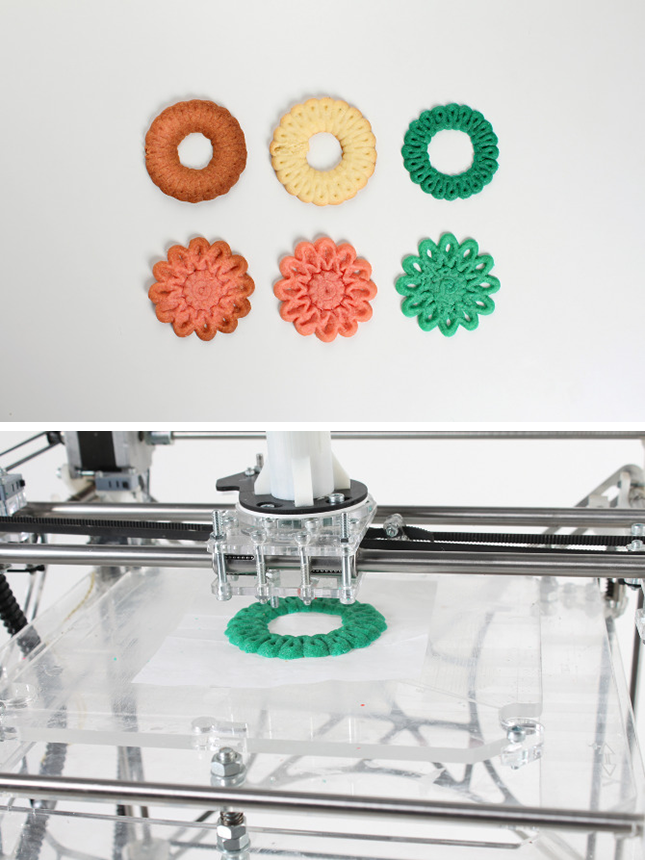 The technique was invented and patented by Stratasys. The operation of a PolyJet 3D printer is very similar to a conventional, well-known inkjet printer, but printing is carried out not on paper and not with simple ink, but on a special substrate in the chamber, and an acrylic-based liquid photopolymer acts as a material.
The technique was invented and patented by Stratasys. The operation of a PolyJet 3D printer is very similar to a conventional, well-known inkjet printer, but printing is carried out not on paper and not with simple ink, but on a special substrate in the chamber, and an acrylic-based liquid photopolymer acts as a material.
3D printer supporting PolyJet technology is equipped with a special print head with nozzles. There can be several printheads, which allows you to print faster and even prototyping several objects at once. The printing process is carried out by dosed deposition of a photopolymer. One layer of 16 microns is sprayed at a time. Then this layer is exposed to an ultraviolet lamp and the photopolymer turns into a hard plastic. After that, the working platform with the substrate is lowered, and the algorithm is repeated again. When printing complex geometric shapes, a support material is used. For this technology, a special gel-like material has been created, which is easily removed with plain water or hands.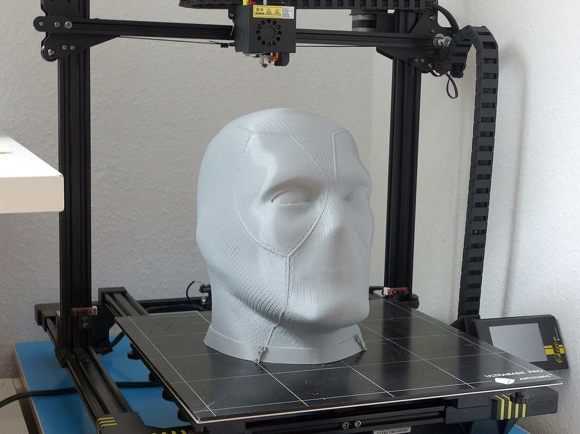
A key feature of PolyJet 3D printing technology is the ability to use multiple materials in one print run. At the same time, there are models of 3D printers that can mix photopolymers in various proportions, obtaining a variety of composite materials with certain characteristics. Also, this technology is characterized by the possibility of complex color reproduction. That is, it is possible to use color printing, the palette of which includes about 1000 colors and shades. In fact, it is the only additive manufacturing technology that supports these capabilities.
Other advantages of the method include: high printing speed, high accuracy and detail, perfect surface and generally excellent quality of printed objects. In addition, a wide range of materials allows you to create objects of almost any kind. More than 100 different photopolymer resins can be used as a base, mixing of which allows obtaining materials from transparent to completely opaque, from hard to elastic and rubbery. This is truly a new standard for realism in the most complex prints. PolyJet technology allows you to achieve perfect surface smoothness and imitate any even the most subtle texture. The camera of the PolyJet 3D printer is quite large, but if you need to print a large object, then it can be broken into parts, which are then simply glued together.
This is truly a new standard for realism in the most complex prints. PolyJet technology allows you to achieve perfect surface smoothness and imitate any even the most subtle texture. The camera of the PolyJet 3D printer is quite large, but if you need to print a large object, then it can be broken into parts, which are then simply glued together.
The only disadvantage of the technology is its high cost. The equipment is very expensive, and photopolymer resins are not cheap. But this does not mean that you cannot use this technology, because you have the opportunity to order 3D printing using PolyJet technology in our company. In a short time, we will implement your project on our own 3D printer. All you need is to provide us with the STL file.
PolyJet 3D printing technology is truly limitless.
COLOR JET PRINTING TECHNOLOGY – + CJP
Color inkjet 3D printing - CJP (ColorJet Printing) technology - a patented technique invented by 3D Systems.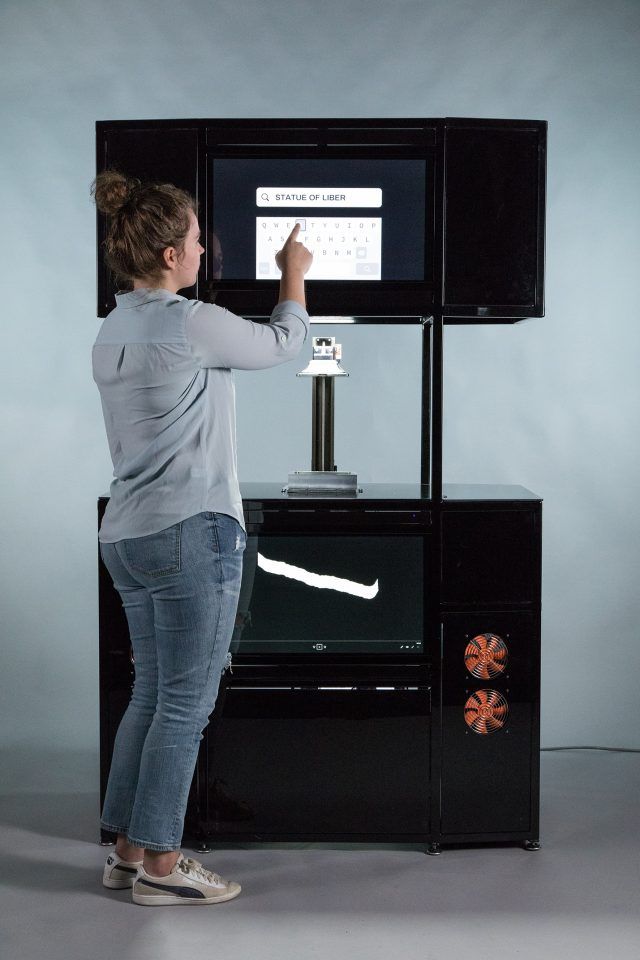 It consists in layer-by-layer gluing and coloring of the powder gypsum composite. 3D printing of this type is based on a technique called 3DP, which is its improvement.
It consists in layer-by-layer gluing and coloring of the powder gypsum composite. 3D printing of this type is based on a technique called 3DP, which is its improvement.
3D printing by this method is based on the use of two materials: base and binder. To create the base layer, a consumable of the main type is used. It consists of gypsum mixed with a polymer. And the binder is used for gluing and staining the layers.
ColorJet Printing 3D printer has two cameras. A gypsum composite is poured into one of them, and the second chamber is used to remove excess material. The model is "grown" in layers. A special roller distributes a thin layer of material on the working platform. The print head applies the adhesive and colors the main consumable particles. All this is carried out in accordance with the loaded mathematical 3D model. The working surface is lowered by the amount of the layer (0.1016 mm), and the roller again applies a layer of gypsum composite powder, and so on until the model is printed to the end.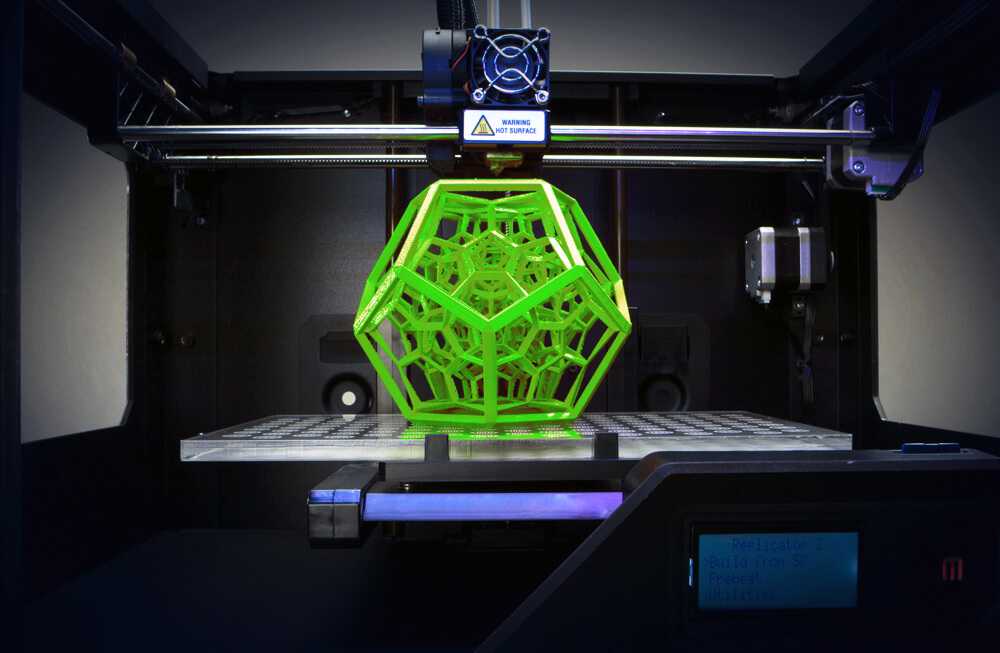
ColorJet Printing technology has a relatively low cost of printed models. Its advantage is the absence of the need for supports, since the non-glued material will act as supporting structures. In addition, the material that was not used during printing can be reused. It turns out that this method of additive manufacturing is waste-free.
The CJP technology is the only one that uses the CMYK printing color palette. This palette includes 390 thousand colors and shades. The material is dyed during the gluing of the layer, resulting in details with excellent color reproduction.
The accuracy of building a model by this method is very high, the minimum printed element has dimensions of 0.1-0.4 mm. The thickness of the walls of the prototype, which will not collapse under their own weight, is 0.102-0.089 mm.
Models printed using ColorJet Printing technology have a typical gypsum rough surface, characterized by a high degree of hygroscopicity. The strength of the models is average.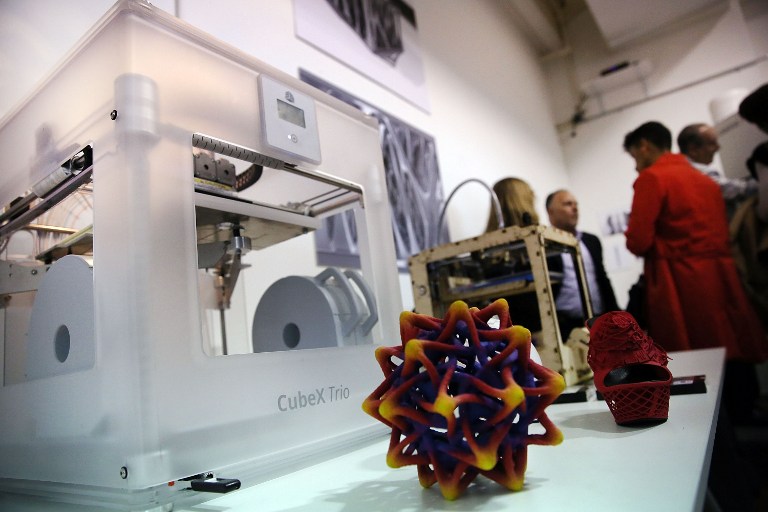 However, finished models are easy to sand, paint and glue. To improve the characteristics of the model and protect them from moisture, you can cover the surface with varnishes, waxes, resins, as well as all kinds of fixatives.
However, finished models are easy to sand, paint and glue. To improve the characteristics of the model and protect them from moisture, you can cover the surface with varnishes, waxes, resins, as well as all kinds of fixatives.
The technology can be used for 3D printing of architectural models, product presentations, souvenirs, miniatures, etc. Despite the fact that the products are of low strength, they allow you to visually evaluate the prototypes.
CJP 3D printer has impressive dimensions and is quite expensive, despite the fact that the cost of printed prototypes is low, not everyone can afford such pleasure. In our company, you can order 3D printing using ColorJet Printing technology. We guarantee you prompt execution of the order and full compliance of the prototype with the modeled object. All you need is to provide us with an STL file with a 3D model.
Take advantage of CJP 3D printing technology with our help and appreciate all its advantages in practice.
SELECTIVE LASER SINTERING PRINT TECHNOLOGY – + SLS
Selective, that is, selective, laser sintering is a 3D printing technology that was created back in 1979.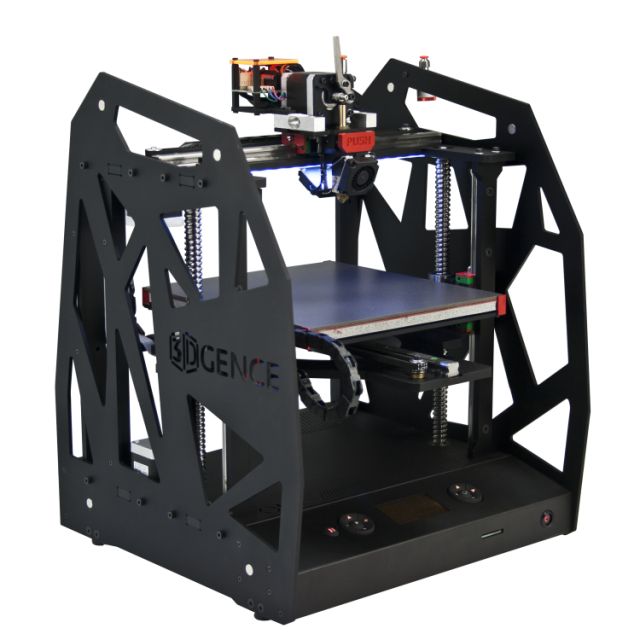 However, for a long time it was not available to the market until DTM was created in 1996. In 2001, 3D Systems bought this company, and in 2014 the patent expired, and now this technology is available to a wide range of consumers.
However, for a long time it was not available to the market until DTM was created in 1996. In 2001, 3D Systems bought this company, and in 2014 the patent expired, and now this technology is available to a wide range of consumers.
The SLS 3D printing technique consists in the fact that the material is heated by a laser beam until the particles are sintered, that is, not completely. As a result, the model turns out not to be solid, but as if “sintered” from individual tiny particles. If we consider the structure under magnification, then individual particles of the material will be visible, as if glued to each other.
The operation of a 3D printer that prints using SLS technology is as follows. Powder material is poured into the chamber. A 3D model in STL format is loaded into the software. The working platform is exposed and a thin layer of material (thickness about 120 microns) is applied to it, leveled with a roller. The laser sinters the powder particles according to the loaded model.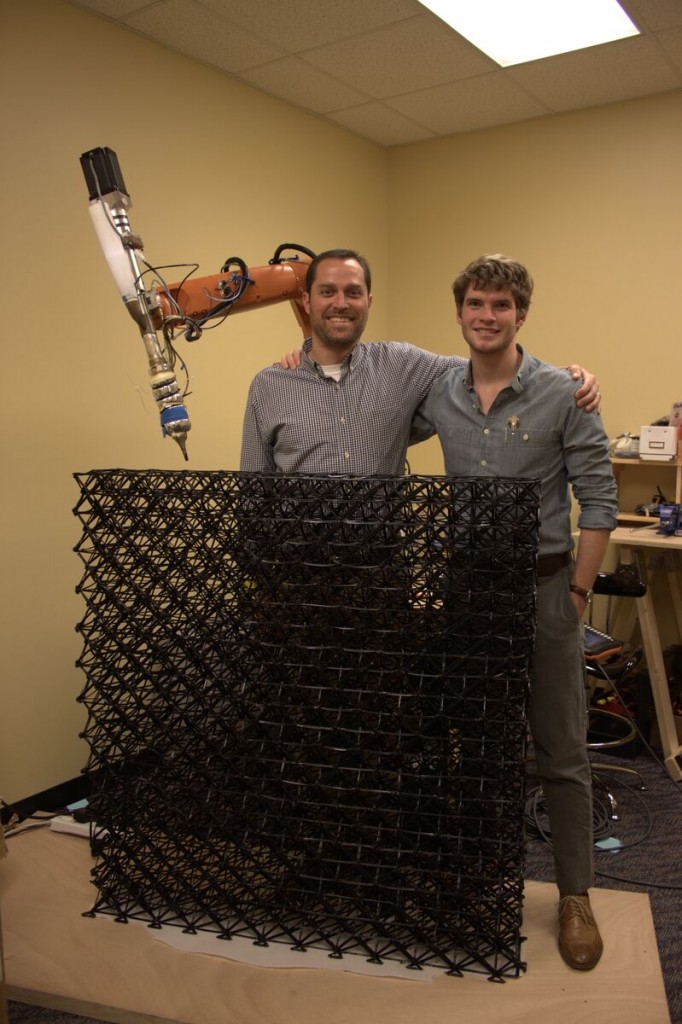 After the layer is completed, the platform is lowered and a new layer of material is applied. The procedure will be repeated until the very last layer is completed.
After the layer is completed, the platform is lowered and a new layer of material is applied. The procedure will be repeated until the very last layer is completed.
Since there is unused material in the working chamber, the need for supports simply disappears, because complex and overhanging parts will be supported by unused material. This allows you to get models of any, even very complex geometry.
Powder polymers, metals and their alloys, ceramics, glass, composite materials can be used as consumables. But in any case, the material must be in powder form. Due to the fact that the power of laser radiation can be adjusted, the degree of melting of the material can change, and, accordingly, the strength and uniformity of the structure of the resulting model. Currently, the most popular material for 3D printing using SLS technology is polyamide. This is a versatile powder material that can be used in almost any field. If powdered metal is used for printing, it is preheated to make printing faster and easier.
As a result of 3D printing, models are obtained with a surface that requires processing, in particular grinding. Models made of polyamide are sensitive to moisture, so they must be coated with a protective compound, such as moisture-resistant paint, if outdoor use is planned.
Selective laser sintering shows excellent results in small batch production as well as for making master models. This 3D printing technology is in demand in the aerospace industry, in manufacturing, etc.
The disadvantages of SLS 3D printing technology are the high cost of equipment. In addition, the powder material is potentially harmful to the human body, so a separate room with air conditioning and an air filter is equipped for such 3D printers. All this imposes difficulties for additive manufacturing using this technique. But this does not mean that you cannot take advantage of the possibilities of selective laser sintering technology, because our company provides professional 3D printing services on such equipment. You can order 3D printing using SLS technology from us. All you need is to provide us with a file with a 3D model in STL format. We guarantee you high quality printing in full accordance with the provided 3D model.
You can order 3D printing using SLS technology from us. All you need is to provide us with a file with a 3D model in STL format. We guarantee you high quality printing in full accordance with the provided 3D model.
SELECTIVE LASER MELTING PRINT TECHNOLOGY – + SLM
Selective (selective) laser melting - SLM is a 3D printing method from a mathematical CAD model, which is used to create 3D objects by melting metal powders. For this, high-power lasers are used.
Using this technology, it is possible to create precision metal parts that will later be used in various units and assemblies, including non-separable structures that change their geometry during use. This type of printing is becoming more and more widespread, because the parts created by this method are in many ways superior in their mechanical and physical characteristics to products produced by traditional methods.
The advantages of 3D printing using SLM technology are: the ability to solve the most complex production problems, including in the aerospace industry, where parts and assemblies have a hard load and serious requirements are imposed. Also, SLM printing is used in experimental and scientific and technical activities, where it is possible to significantly reduce the R&D cycle, because the most complex mechanisms and products can be created without serious equipment.
Also, SLM printing is used in experimental and scientific and technical activities, where it is possible to significantly reduce the R&D cycle, because the most complex mechanisms and products can be created without serious equipment.
The technology also allows you to print objects with internal cavities, which can significantly reduce the weight of products.
The essence of the method lies in the layer-by-layer application of metal powder on a special heated platform and its subsequent processing with a high-power laser, in accordance with the CAD model. The working chamber of the 3D printer, where the melting process itself takes place, is filled with argon or nitrogen. The choice of gas will depend on which consumable is selected for printing. Inert gas will be mainly consumed in preparation for printing, when the chamber is purged, because it is necessary to achieve conditions so that the percentage of oxygen in the chamber is no more than 0.15%. This is a necessary condition in order to avoid the oxidation of metals. Consumables can be: powdered metals and alloys. It can be tool or stainless steel, titanium and its alloys, aluminum, platinum, gold, as well as cobalt-chromium alloys.
Consumables can be: powdered metals and alloys. It can be tool or stainless steel, titanium and its alloys, aluminum, platinum, gold, as well as cobalt-chromium alloys.
The model is fused layer by layer. After the printing of the prototype is completed, it is removed from the chamber with the working platform and separated from it mechanically. In the future, it may require processing, because the surface of the product may not be ideal. However, the product will be very strong and uniform in structure, similar to cast.
One of the advantages of the technology is its economy and non-waste. After all, unsintered material can be reused. The thickness of one layer is 20-100 microns. Thus, SLM 3D printing is a very precise and highly detailed additive manufacturing technique.
The cost of 3D printers using this method is very high. And in general, their operation is by no means a simple matter, requiring special conditions. But you have a great opportunity to use 3D printing using selective laser fusion technology with the help of our company. All you need is just to order 3D printing using this technique in our company. To do this, you need to provide us with an STL file with a CAD model for printing.
All you need is just to order 3D printing using this technique in our company. To do this, you need to provide us with an STL file with a CAD model for printing.
Take advantage of the innovative method of creating high-precision metal products - SLM printing.
ELECTRON BEAM MELTING PRINT TECHNOLOGY – + EBM
One of the most reliable metal 3D printing methods is EBM printing or electron beam melting. This is an additive manufacturing technology that is used to create high-strength, comparable to cast, metal products. Pure (without impurities) metal powder acts as a consumable. Printing is carried out in a vacuum chamber, which minimizes the oxidation of the material, such as pure titanium.
Electron beam melting is very similar to SLS 3D printing technology, i.e. selective laser melting. However, it does not use powerful lasers, but electron emitters, which serve as sources of powerful energy used to melt metal. So-called electron guns fire high power electron beams that fuse metal powder. The method is similar to other 3D printing methods - the layering of consumables. A layer of metal powder is applied, and electron beams, following the contour of the model, fuse the material. Then the algorithm is repeated again until all layers are created and a finished three-dimensional object is obtained in accordance with the mathematical 3D model.
So-called electron guns fire high power electron beams that fuse metal powder. The method is similar to other 3D printing methods - the layering of consumables. A layer of metal powder is applied, and electron beams, following the contour of the model, fuse the material. Then the algorithm is repeated again until all layers are created and a finished three-dimensional object is obtained in accordance with the mathematical 3D model.
As a result of such 3D printing, a high-density metal model is obtained, and the porosity of the structure is absent. This means that additional processing by the method of firing for a strong fusion of the material in the model is not required. And the model itself will have high strength characteristics initially, that is, it will not differ in any way from cast products.
Electron beam melting is printed at high background temperatures of 700-1000 degrees Celsius. This avoids a strong temperature difference between the already cooled printed layer and the fresh hot layer.